- More driver-focused hybrid system than Toyota
- Capable of pretty good economy
- Usual new-gen Kona traits like good practicality and equipment
- Toyota hybrids are more efficient
- Ride quality not as good as petrol Kona
- Service pricing is surprisingly expensive
It’s taken a while to get here but – finally! – hybrid cars are on the up in Australia and make up quite a significant portion of new csr sales. No longer are the only hybrids on the market strange-looking futuristic economy cars like the Toyota Prius, for there are many hybrid variants of many cars now available, and from many brands as well. Hyundai is the latest brand to get its act together on hybrid drivetrains with hybrid versions of the Santa Fe selling well, a hybrid Tucson on its way later in 2024 and this: the 2024 Hyundai Kona Hybrid Premium.
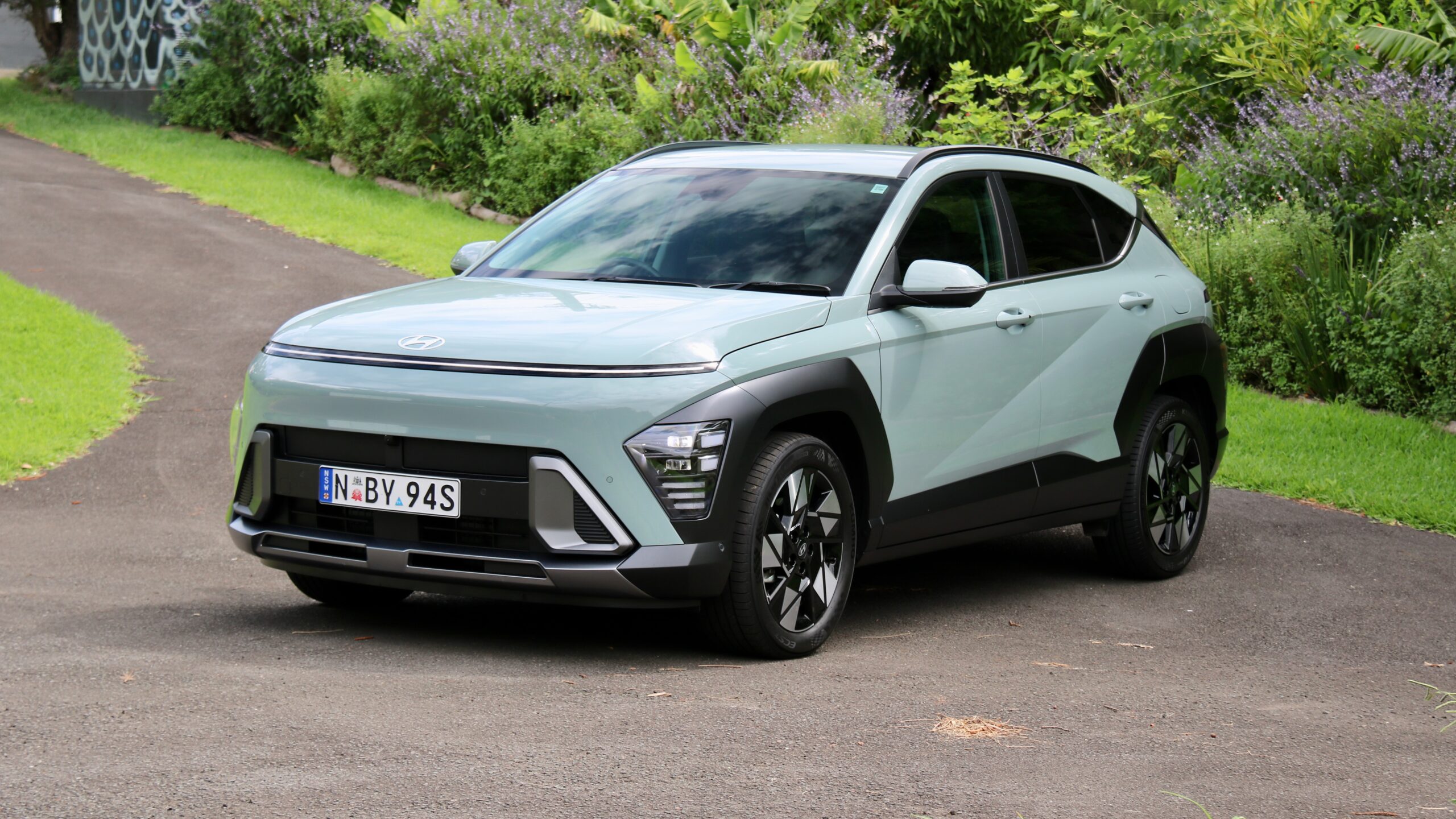
The Kona small SUV is Hyundai’s third-best selling vehicle in Australia behind the i30 and Tucson. It recently added a 1.6-litre four-cylinder hybrid drivetrain option to the range, and competes with cars like the Haval Jolion Hybrid, the Nissan Qashqai e-Power (due to launch soon), the Kia Niro (which is identical mechanically to the Kona) and three Toyotas: the Yaris Cross, C-HR and Corolla Cross. Is it the small hybrid SUV to buy? Let’s find out.
How much does the 2024 Hyundai Kona Hybrid cost to buy?
The 2024 Hyundai Kona Hybrid range kicks off with the entry level model known simply as ‘Kona Hybrid’, which is priced from $36,000 plus on-road costs, which is a $4,000 premium over the regular 2.0-litre petrol Kona. The model we’re testing here is the Kona Hybrid Premium, which commands a $43,500 plus on-road costs asking price, or around $48,000 drive away, depending on location.
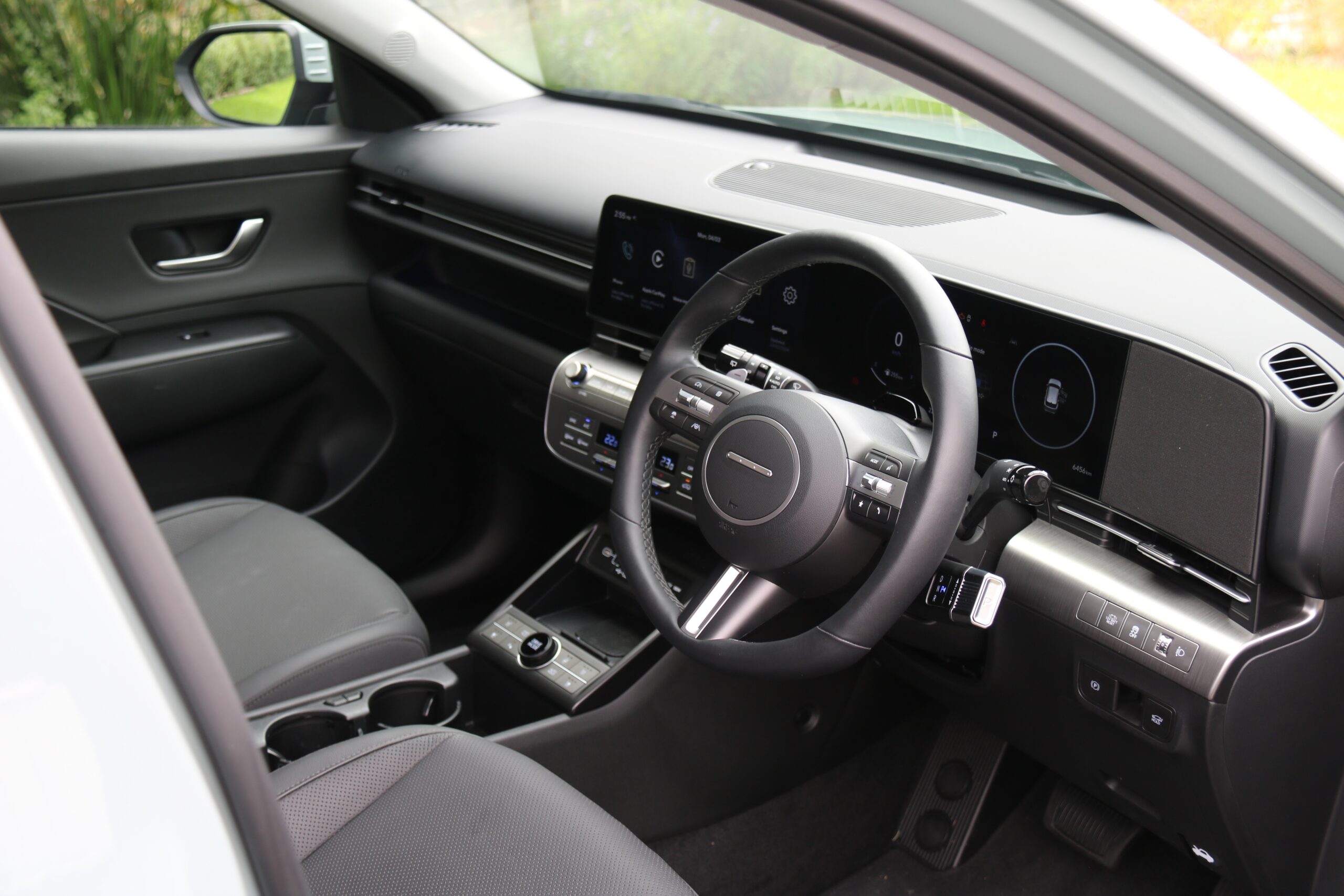
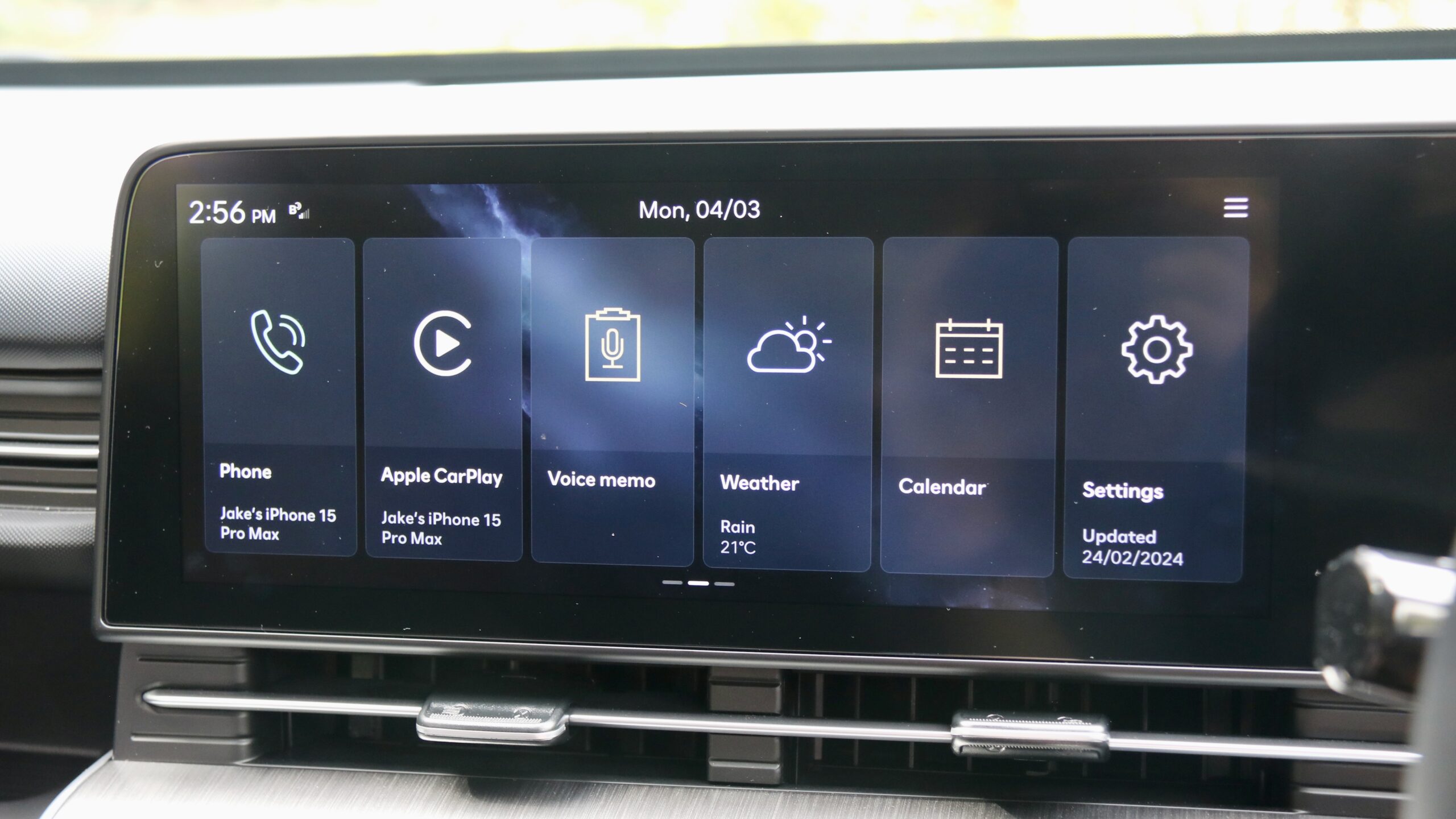
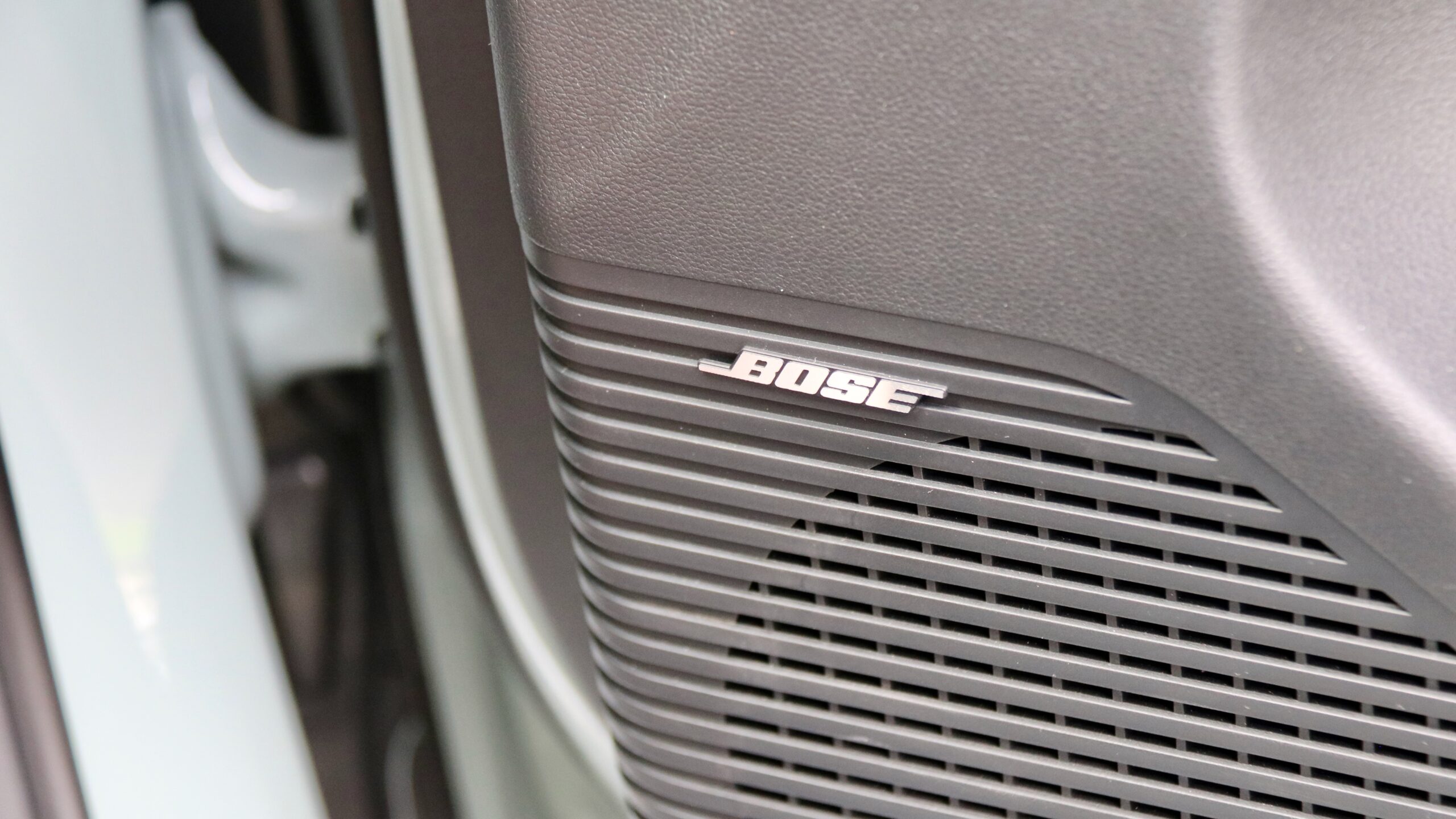

Kona Premium Hybrid standard equipment:
- 18-inch alloy wheels
- Dusk-sensing automatic all-LED exterior lighting
- Rain-sensing automatic wipers
- Roof rails
- Keyless entry with push button start
- Remote start and remote smart parking functionality
- Rear privacy glass
- Hands-free electric tailgate
- Heated and electric-folding mirrors that drop automatically in reverse
- Dual-zone climate control with rear vents
- Leather upholstery
- Heated leather steering wheel with paddle shifters
- 10-way electric driver/8-way front passenger seats with ‘relaxation’ mode and driver’s memory functionality
- Heated and ventilated front seats
- Heated outboard rear seats
- 12.3-inch digital driver’s display
- 12.3-inch touchscreen with live services
- Satellite navigation with live traffic
- Wired and wireless Apple CarPlay and Android Auto
- AM/FM/DAB+ digital radio
- Eight-speaker Bose sound system
- Wireless phone charger
- 4x USB-C charging ports
- Auto-dimming rear mirror
- Customisable LED ambient cabin lighting
Kona Premium Hybrid standard safety equipment:
- Seven airbags (2x front, side and curtain with a front centre unit)
- Auto emergency braking (AEB) with pedestrian, cyclist and intersection assistance
- Low-speed automatic rear braking
- Lane keep assist with lane departure warning
- Lane trace assist
- Adaptive cruise control with stop and go functionality
- Safe exit assist
- Blind-spot monitoring with rear cross-traffic alert (both with braking)
- Blind-spot camera
- Auto high beam
- Traffic sign recognition with warnings for speeding
- Driver attention monitoring
- 360-degree camera
- Front and rear parking sensors
- Burglar alarm
- Tyre pressure monitoring
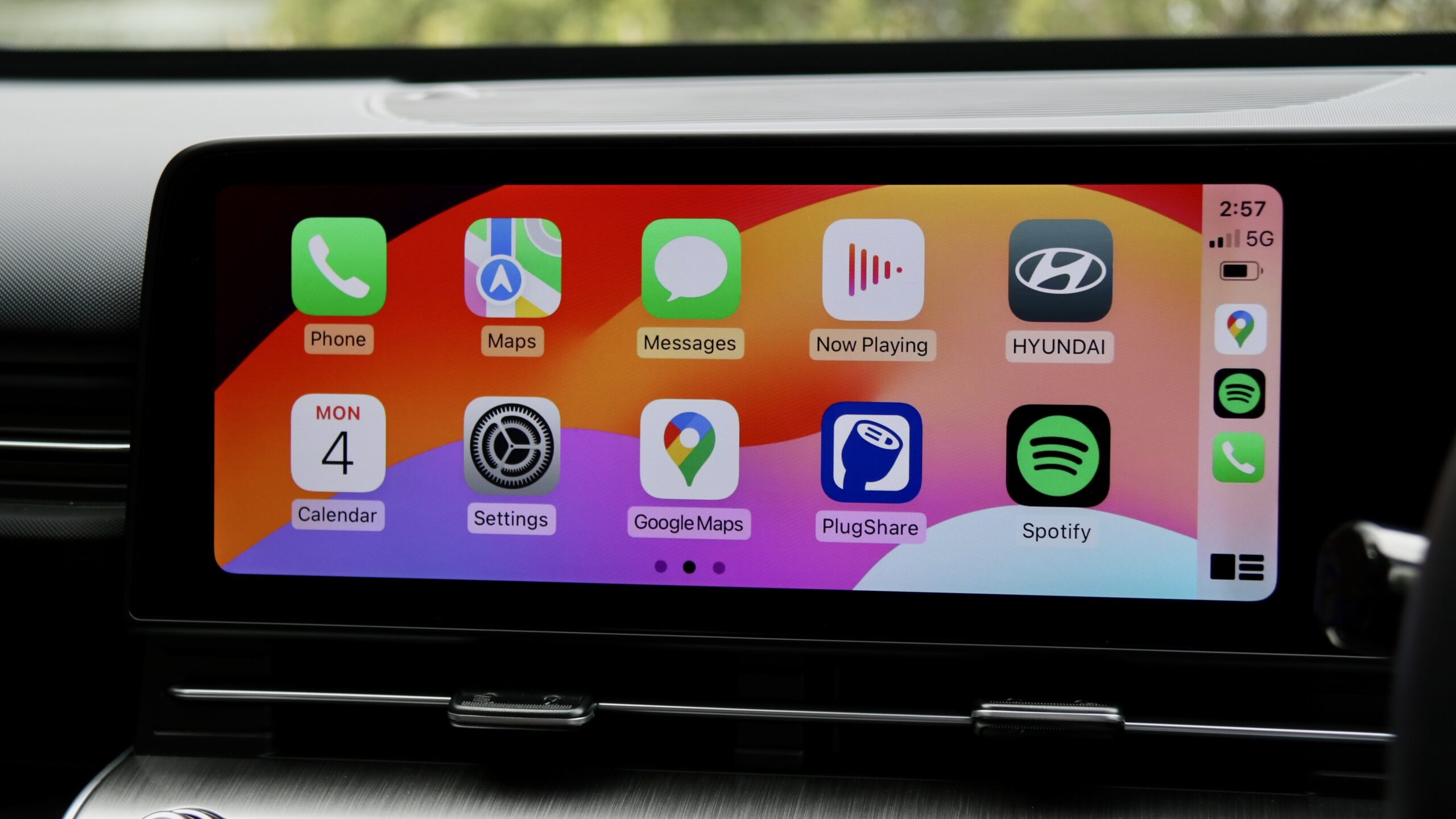
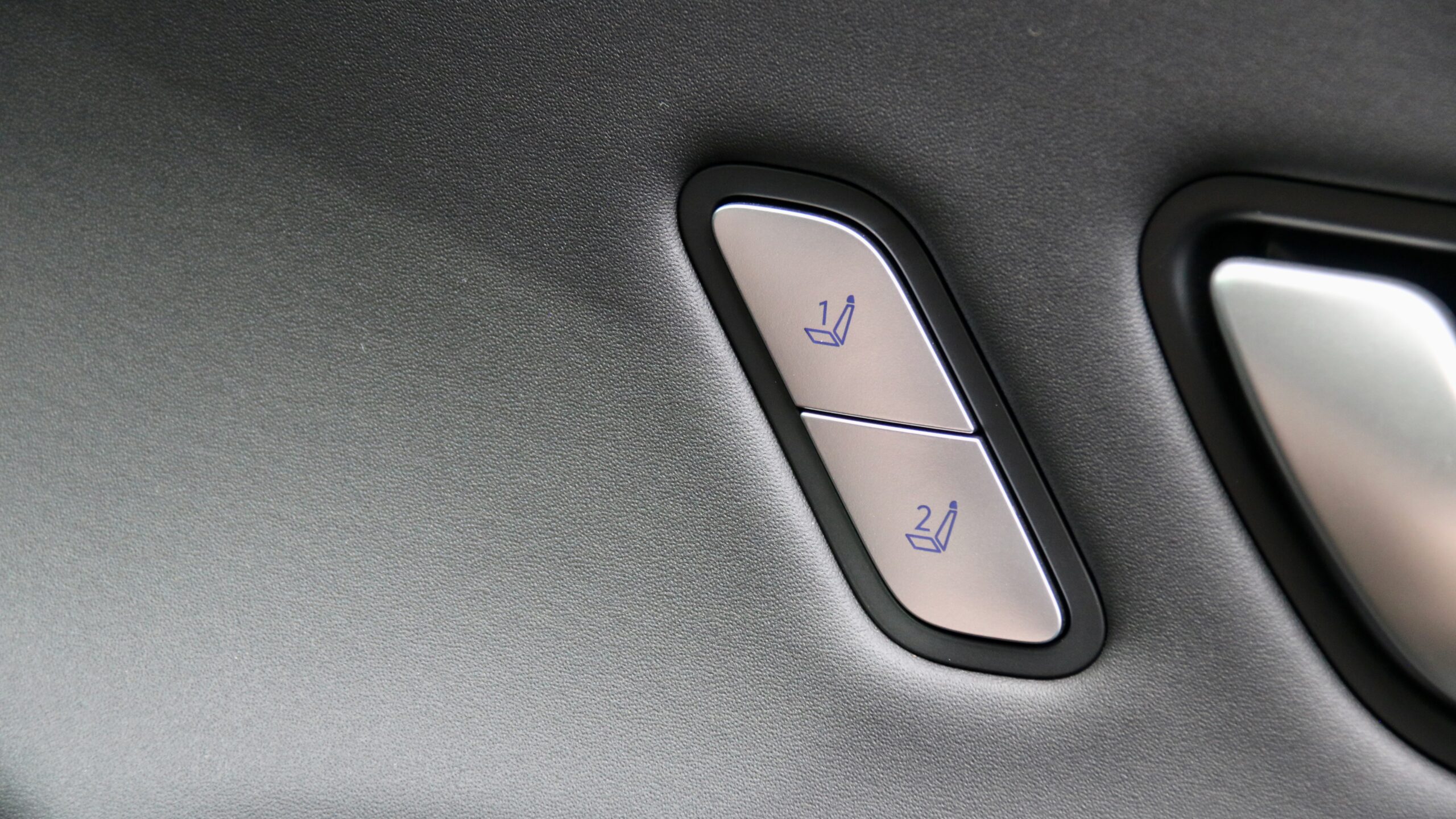
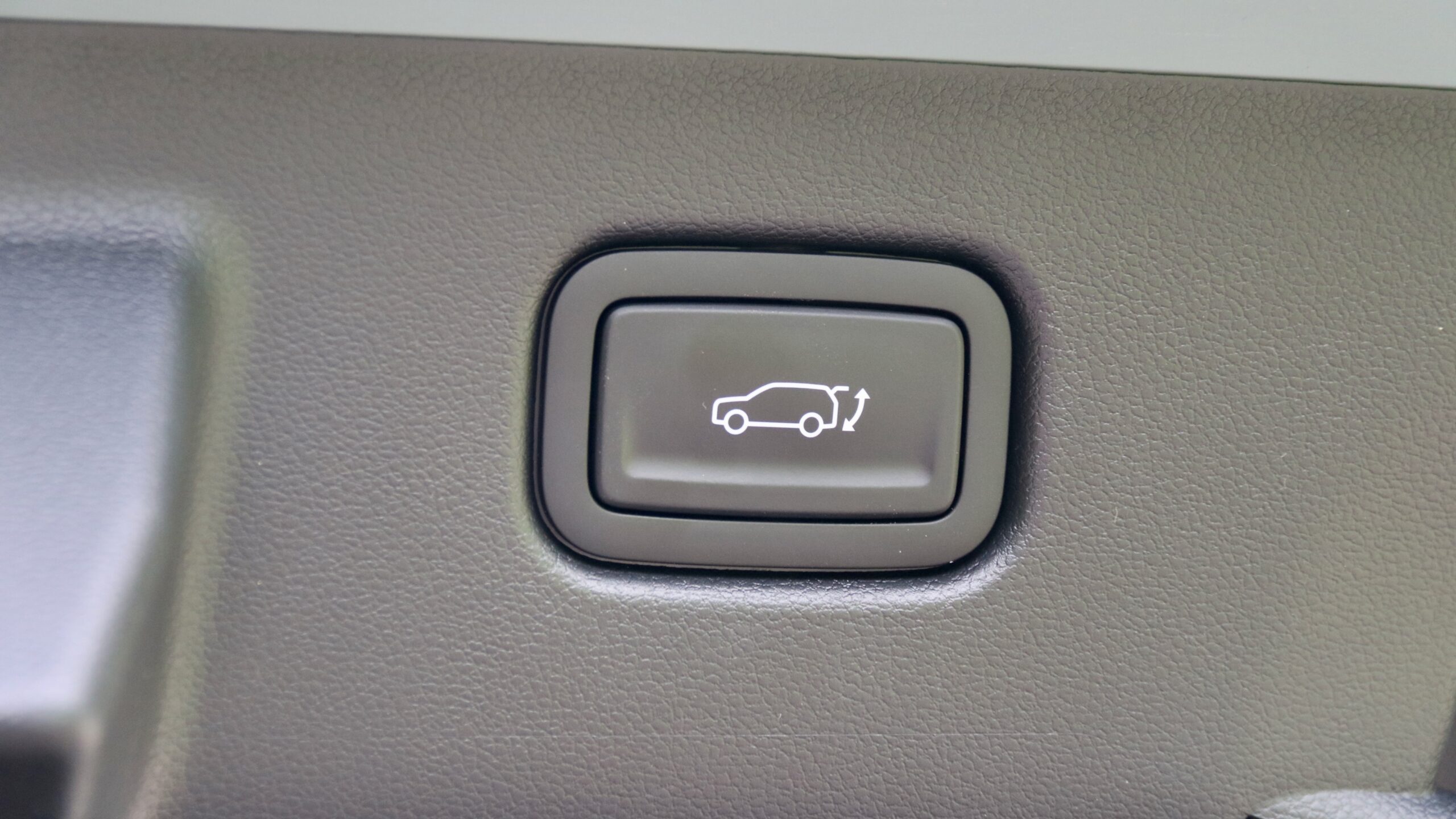
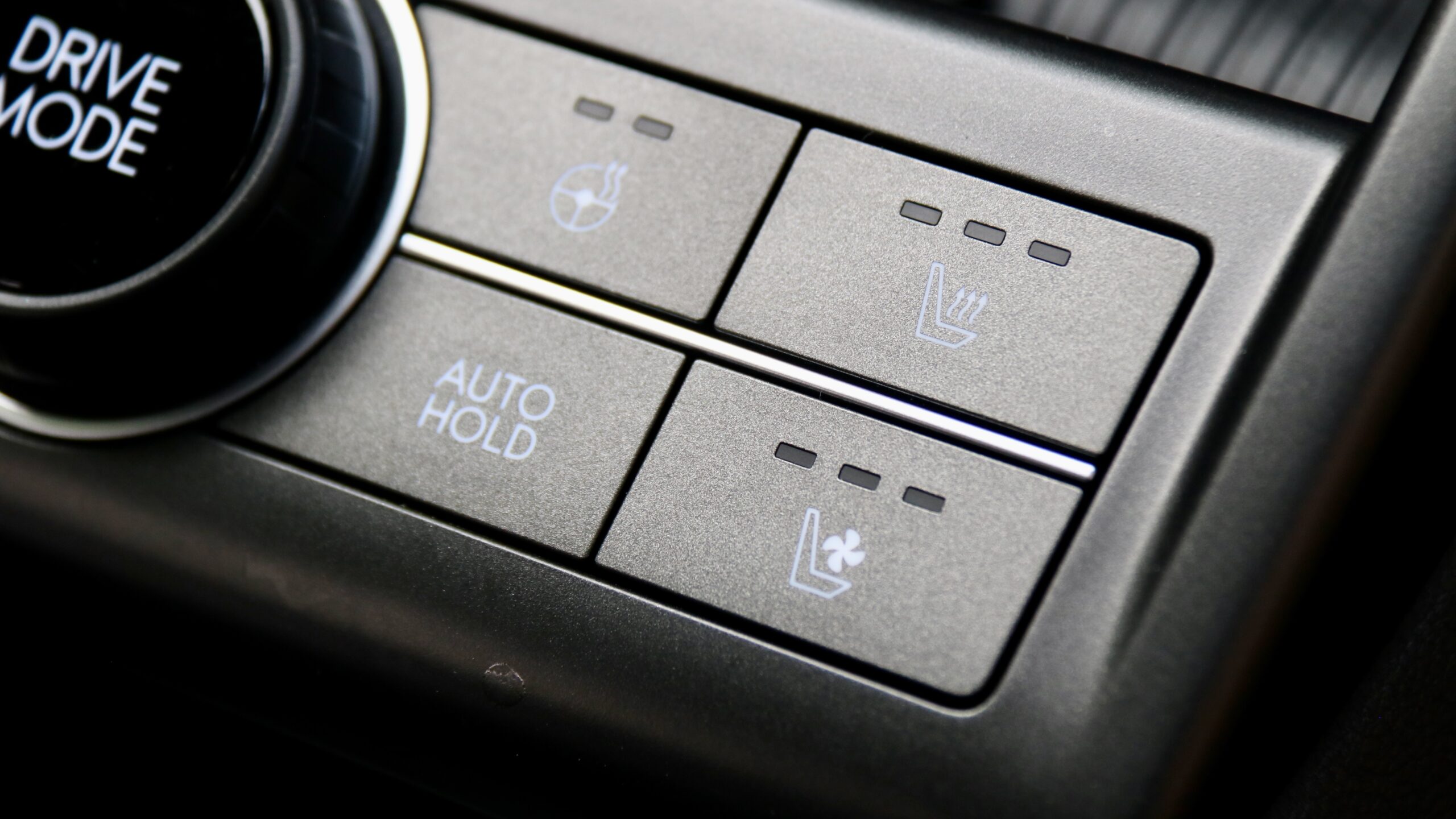
Kona Hybrid Premium options:
- N Line Package which adds a rear spoiler, N Line body kit, twin tip exhaust, 18-inch N Line wheels and N Line sports seats : $3,000
- Panoramic sunroof: $1,500
Kona Premium Hybrid colour range:
- Atlas White
- Mirage Green (on our test car)
- Denim Blue (+$595)
- Abyss Black (+$595)
- Ultimate Red (+$595)
- Ecotronic Grey (+$595)
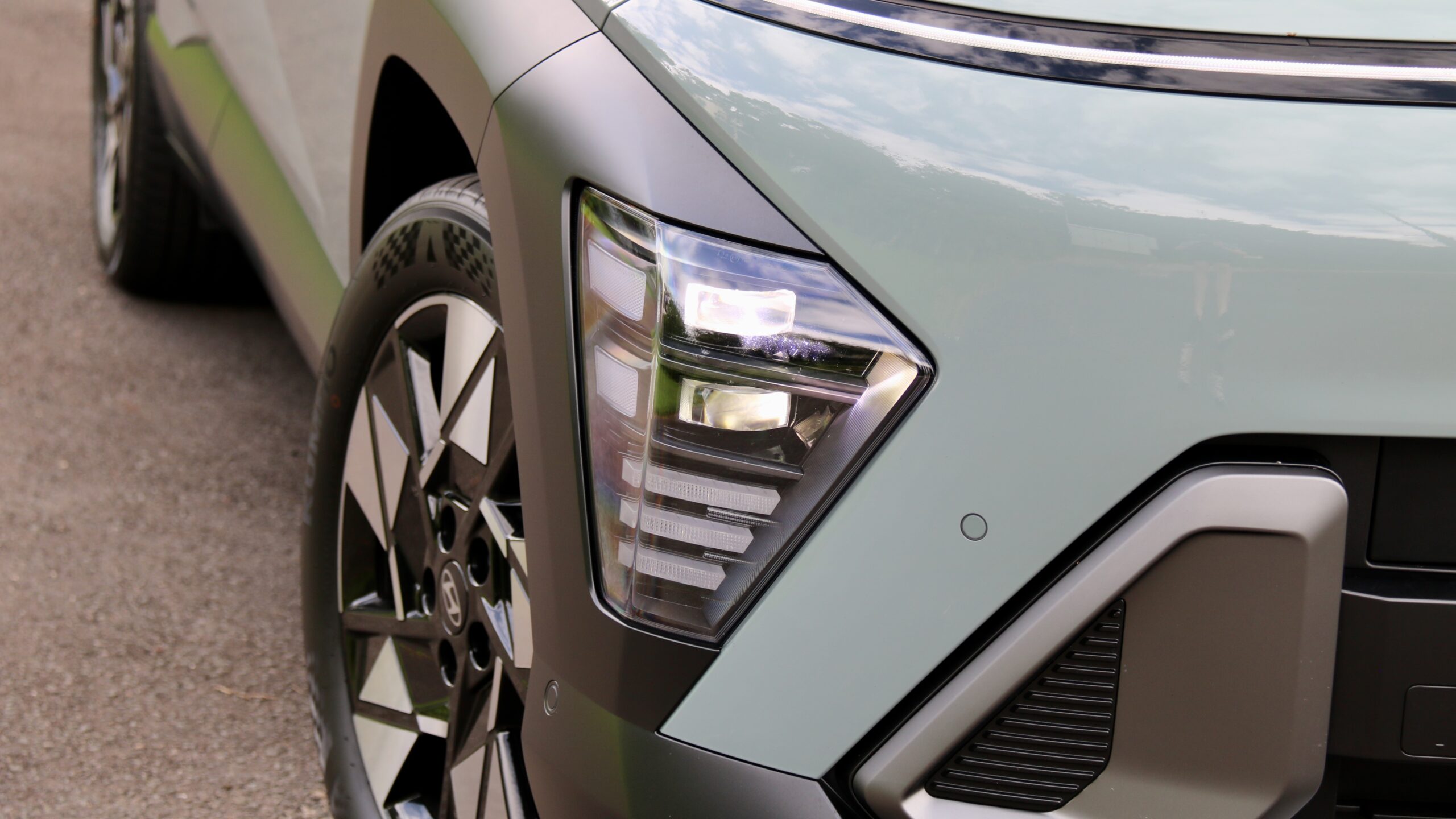
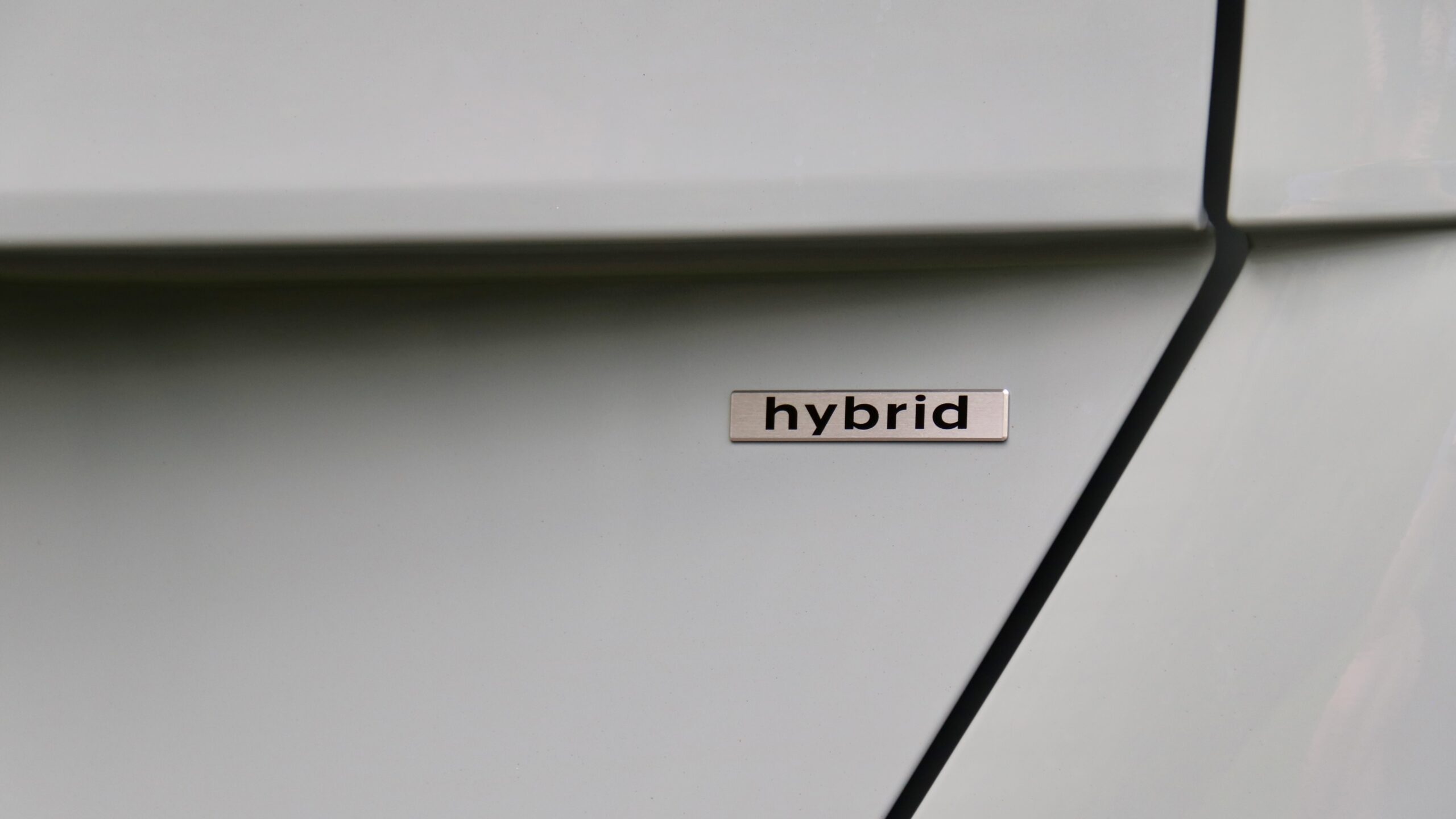
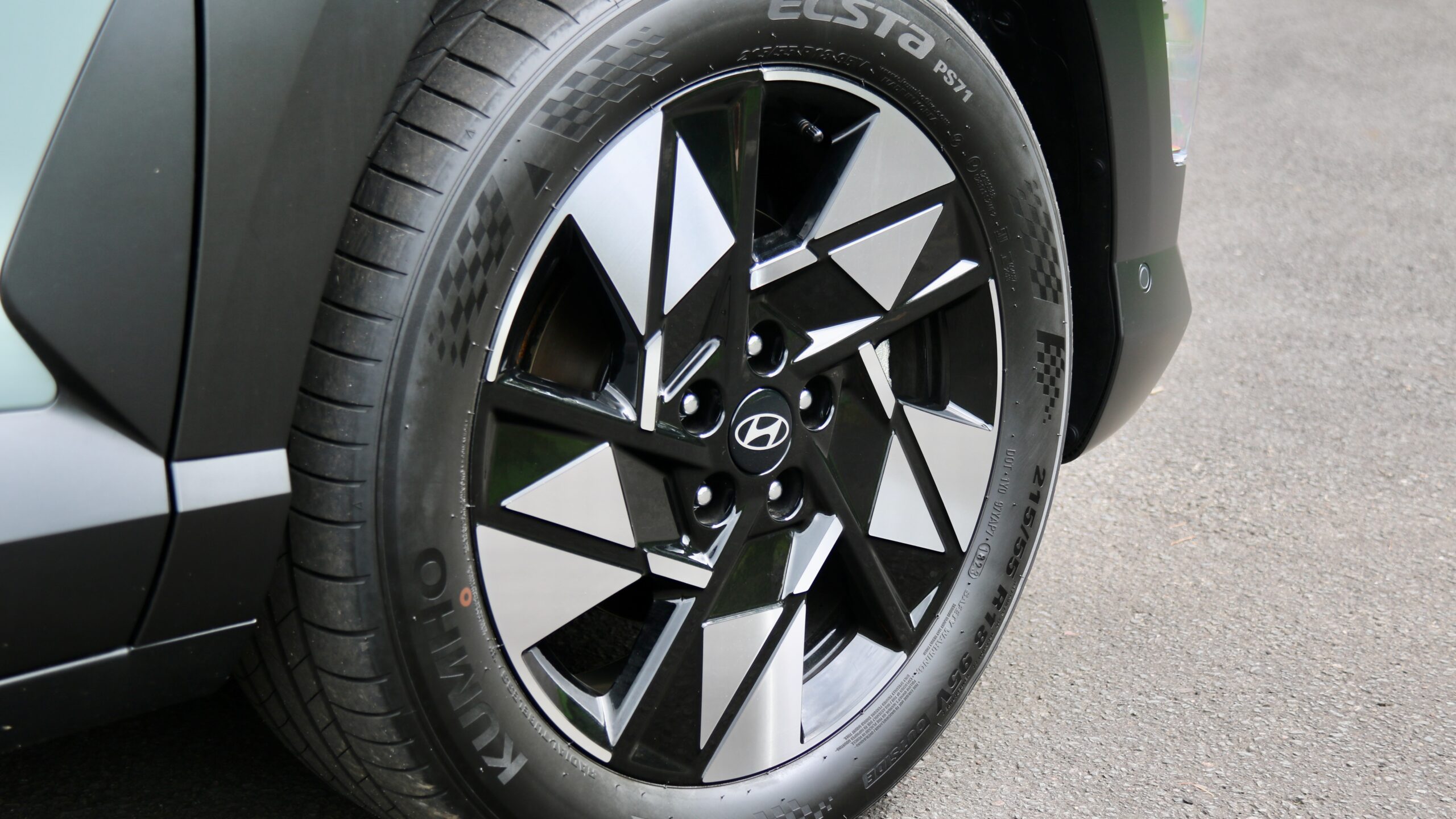
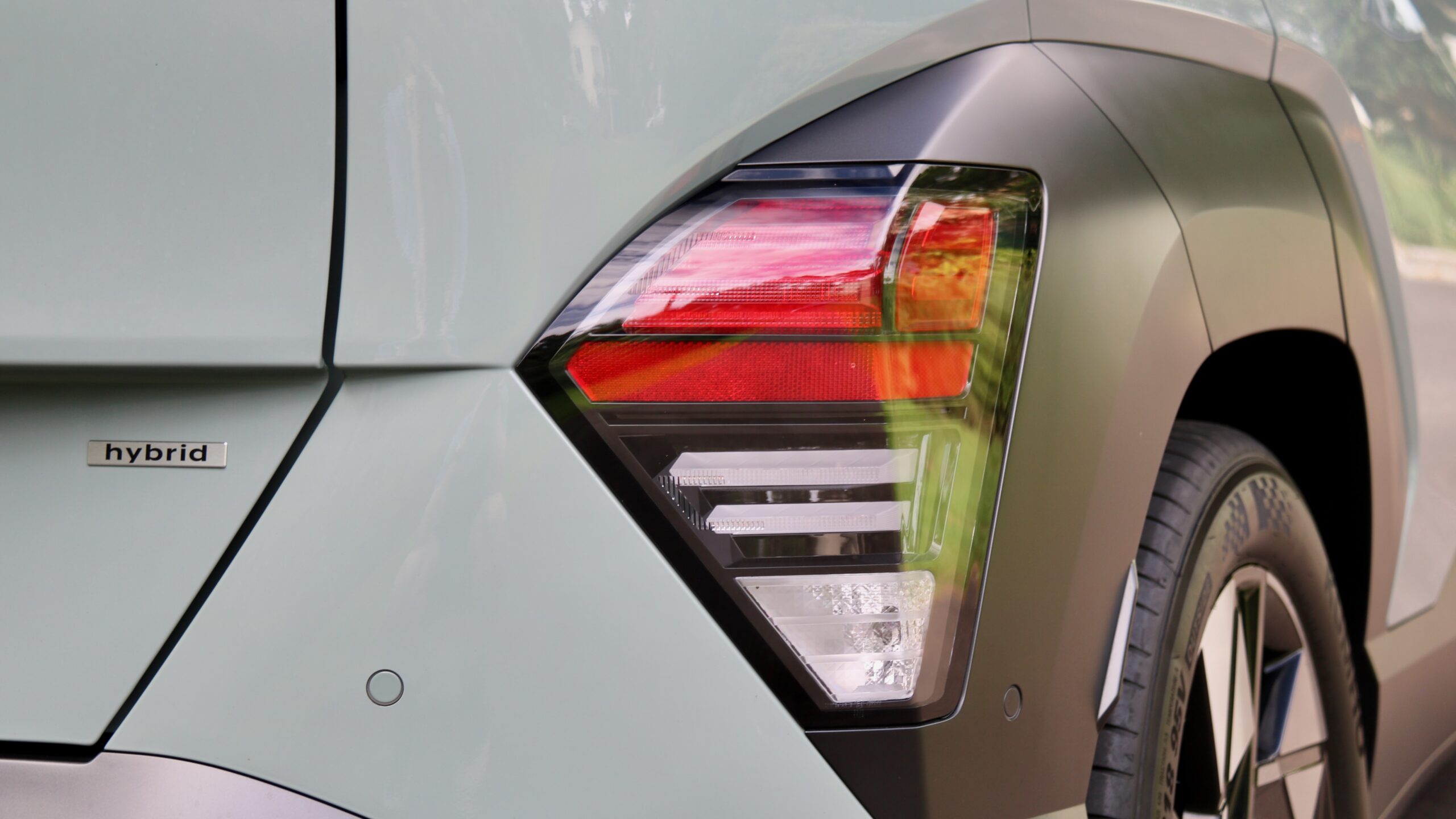
We consider the Toyota Corolla Cross Atmos Hybrid 2WD (priced from around $52,000 drive away, depending on location) to be the Kona Hybrid Premium’s main rival. While it’s priced around $4,000 more than the Kona, it adds a panoramic glass roof that’s optional on the Hyundai, front fog lights and ‘see-through’ functionality for the 360-degree camera. But the Kona adds a lot more despite its lower pricing, including ventilated front seats, an electric front passenger seat and a larger 12.3-inch touchscreen. From that, we think that the Kona is good value for money against its main competitor.
How efficient is the 2024 Hyundai Kona Hybrid Premium?
The powertrain that’s used in the 2024 Hyundai Kona Hybrid mates a 77kW/144Nm 1.6-litre naturally aspirated four-cylinder engine to a hybrid system that uses a 1.32kWh battery and a 32kW/170Nm electric motor driving the front wheels. In total, the system makes 104kW of power and 265Nm of torque. It’s mated to a six-speed dual-clutch automatic transmission and the same powertrain is currently used in both the Kia Niro Hybrid and i30 Sedan Hybrid that’s just gone on sale locally. While those numbers are healthy, the larger 2.0-litre hybrid in the Corolla Cross makes 146kW of power, and feels punchier too.
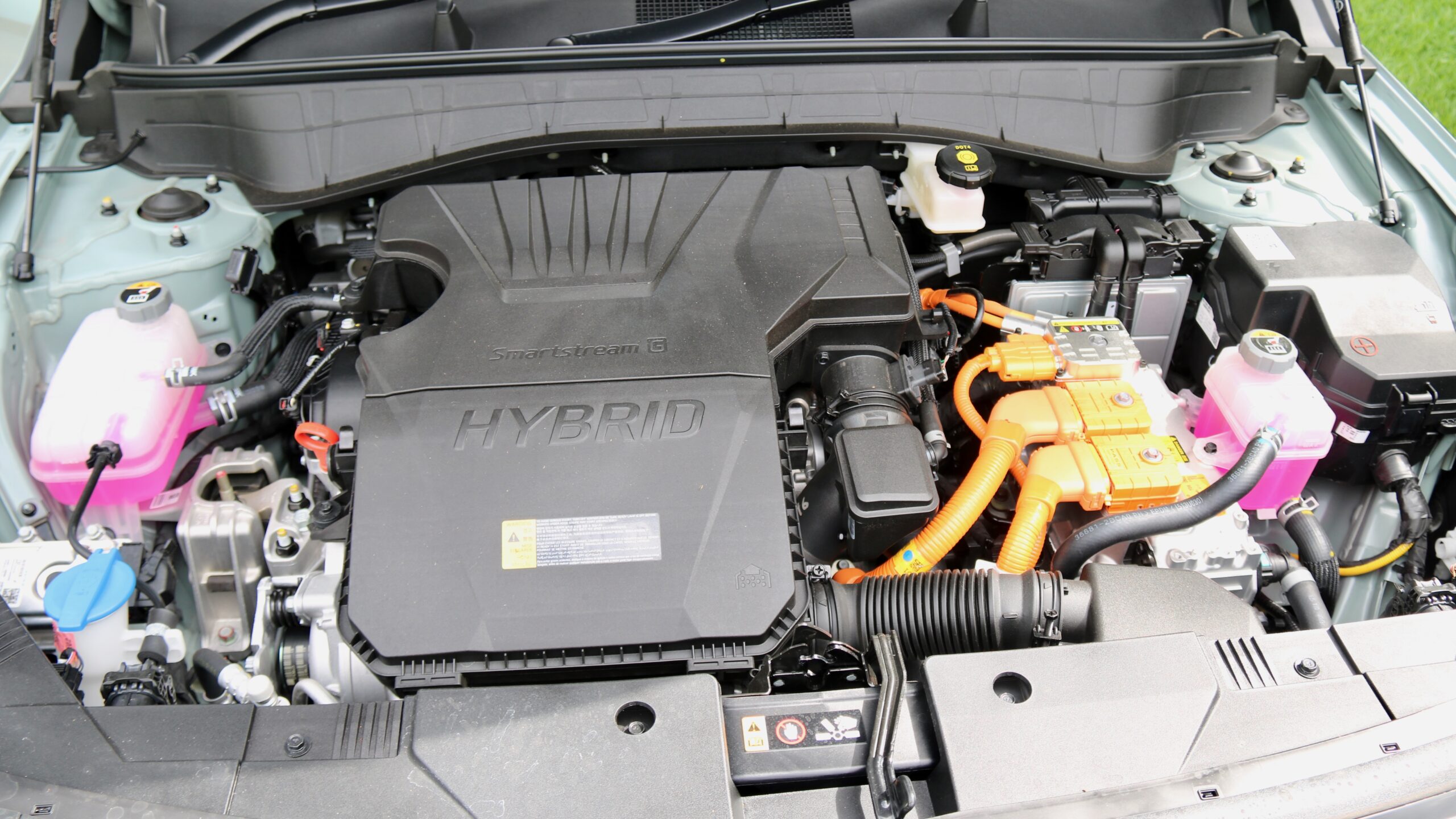
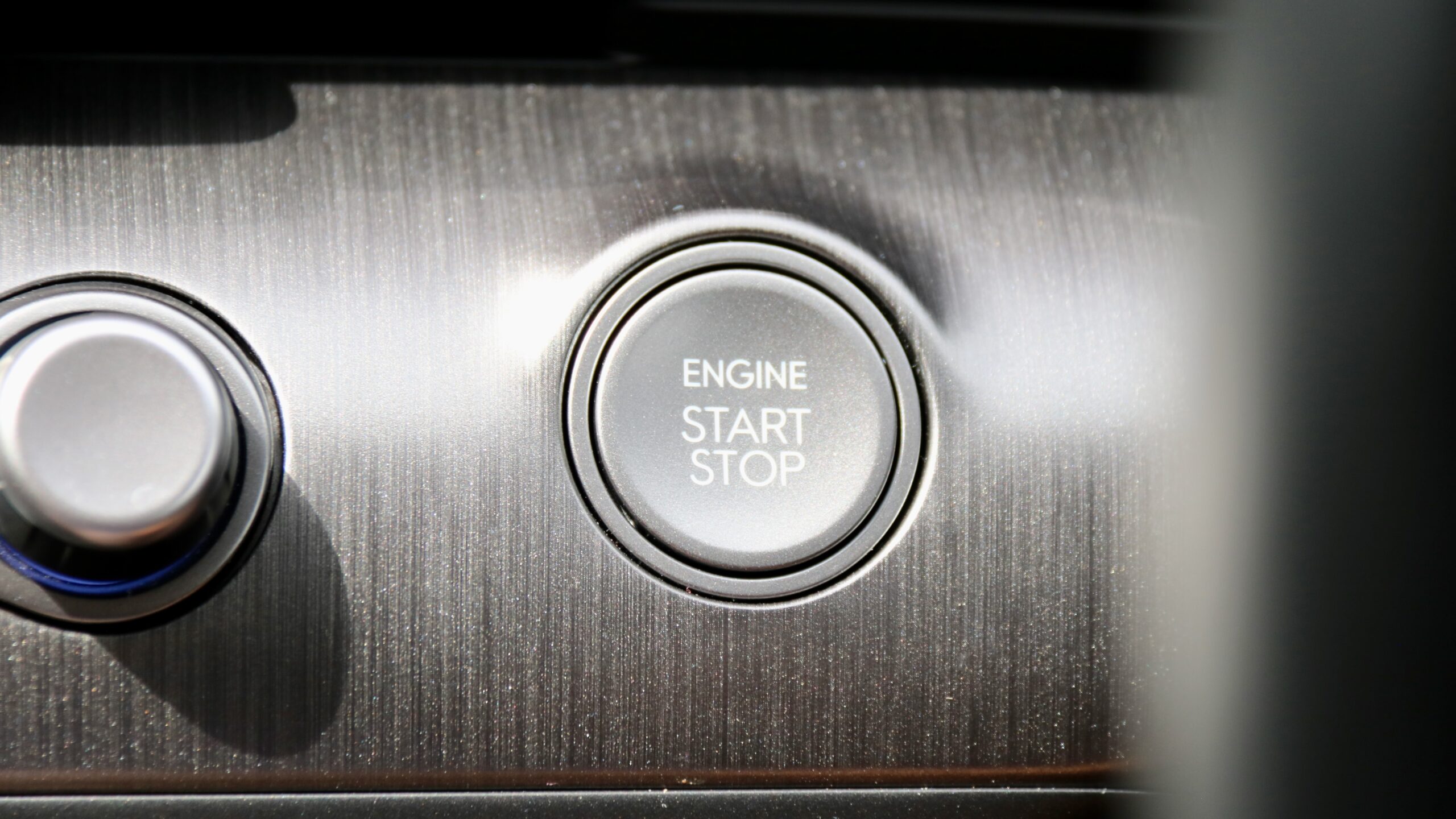
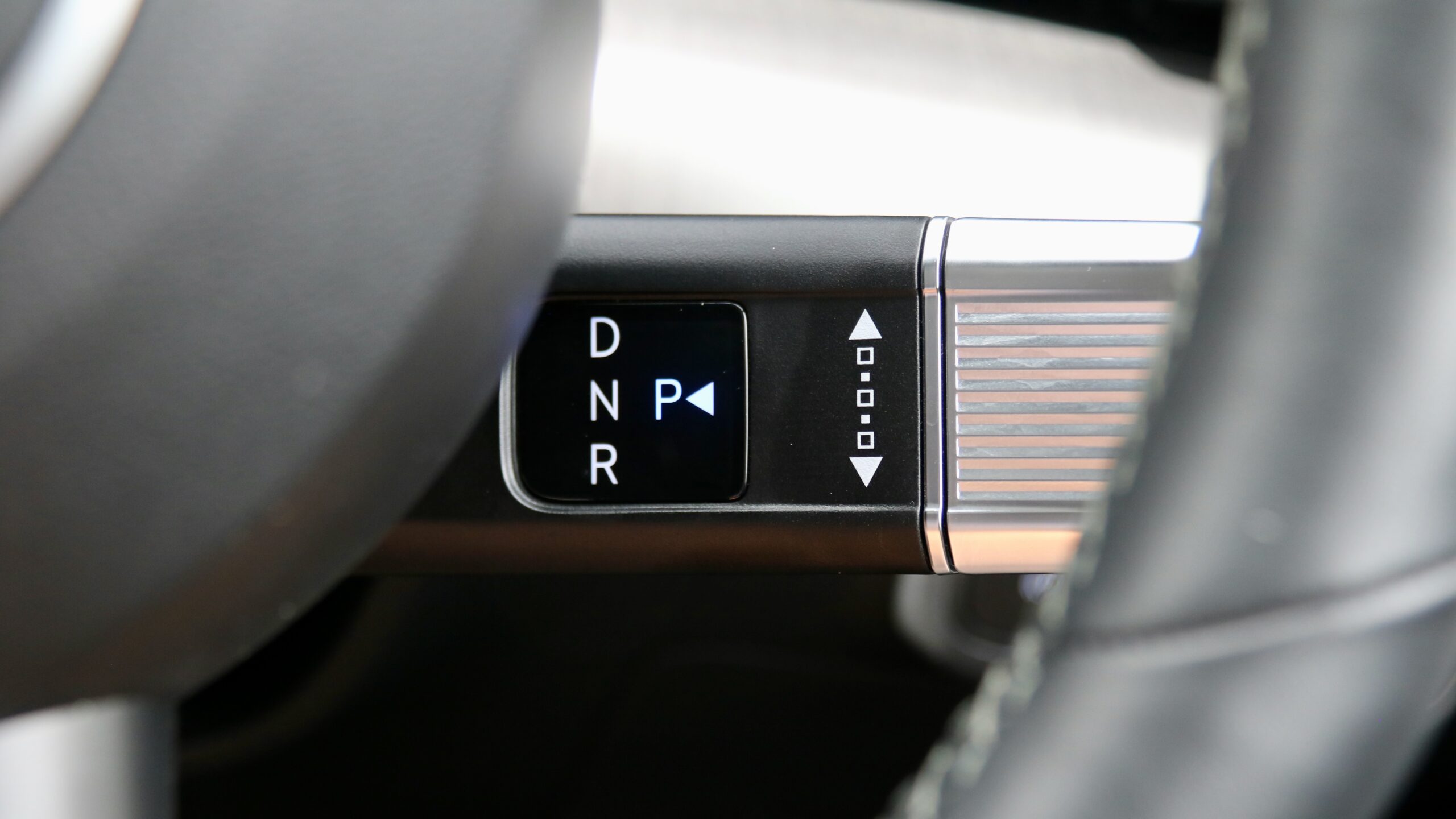
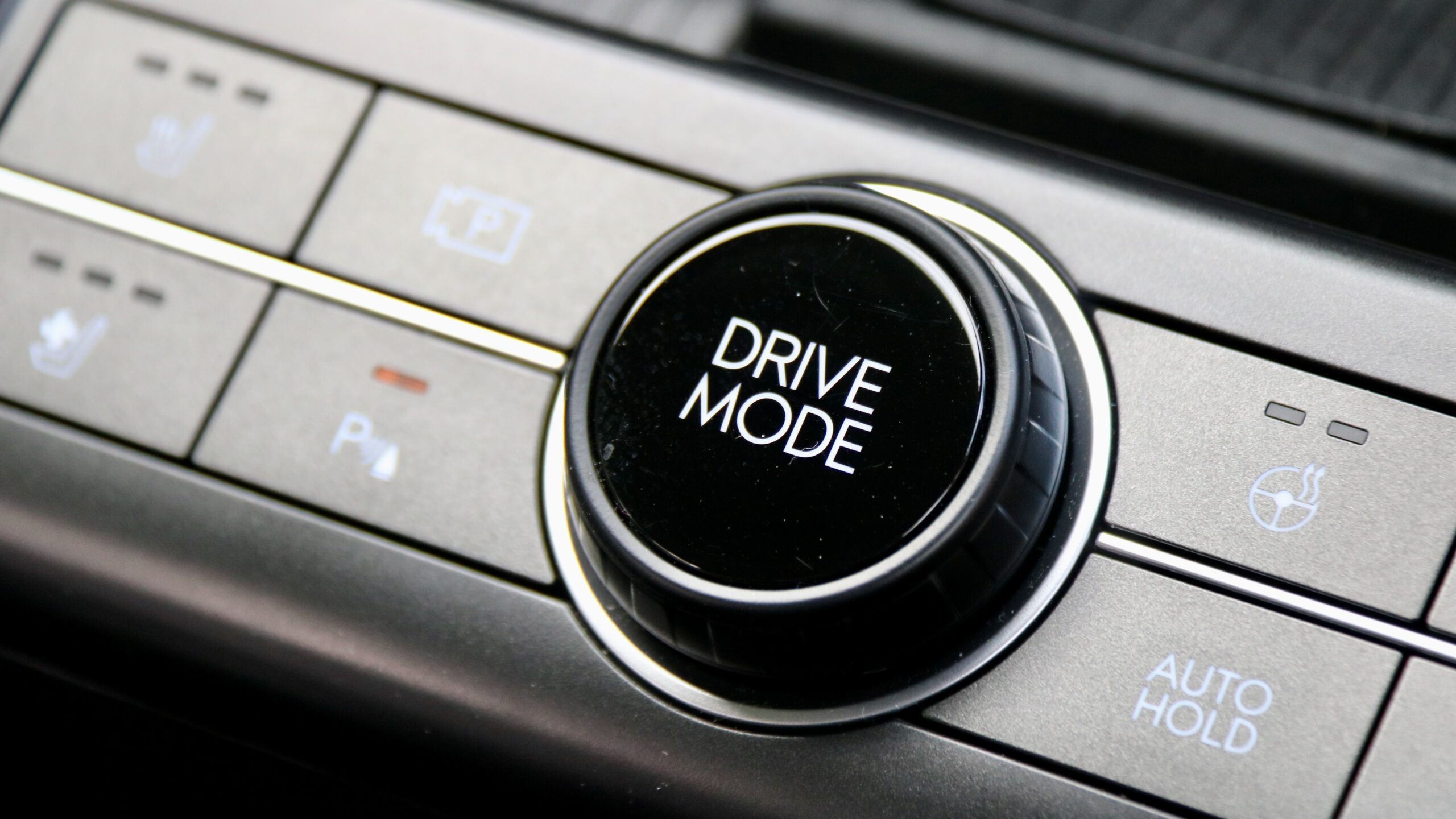
It must be said that the drivetrain of the Kona Hybrid is not quite as good as something you’d find in a Toyota hybrid. The transition from petrol to electric power is just not as smooth as Toyota’s hybrid systems and can be somewhat abrupt, but that’s also because the dual-clutch transmission’s responses can be somewhat mixed at low speeds. But we think that enthusiasts will like the Kona’s hybrid system more than a Toyota because it feels more natural than the Toyota’s CVT gearbox.
Aside from low speeds when the electric motor does a lot of the propulsion heavy lifting and the regenerative braking and engine switching off when braking, the Kona Hybrid feels largely like a regular Kona to drive. The six-speed dual-clutch transmission can be a bit abrupt at lower speeds with an occasional pause moment, but it’s otherwise fine. It’s also more refined than a Toyota hybrid system thanks to the gearbox, which doesn’t send revs flaring when acceleration is called for.
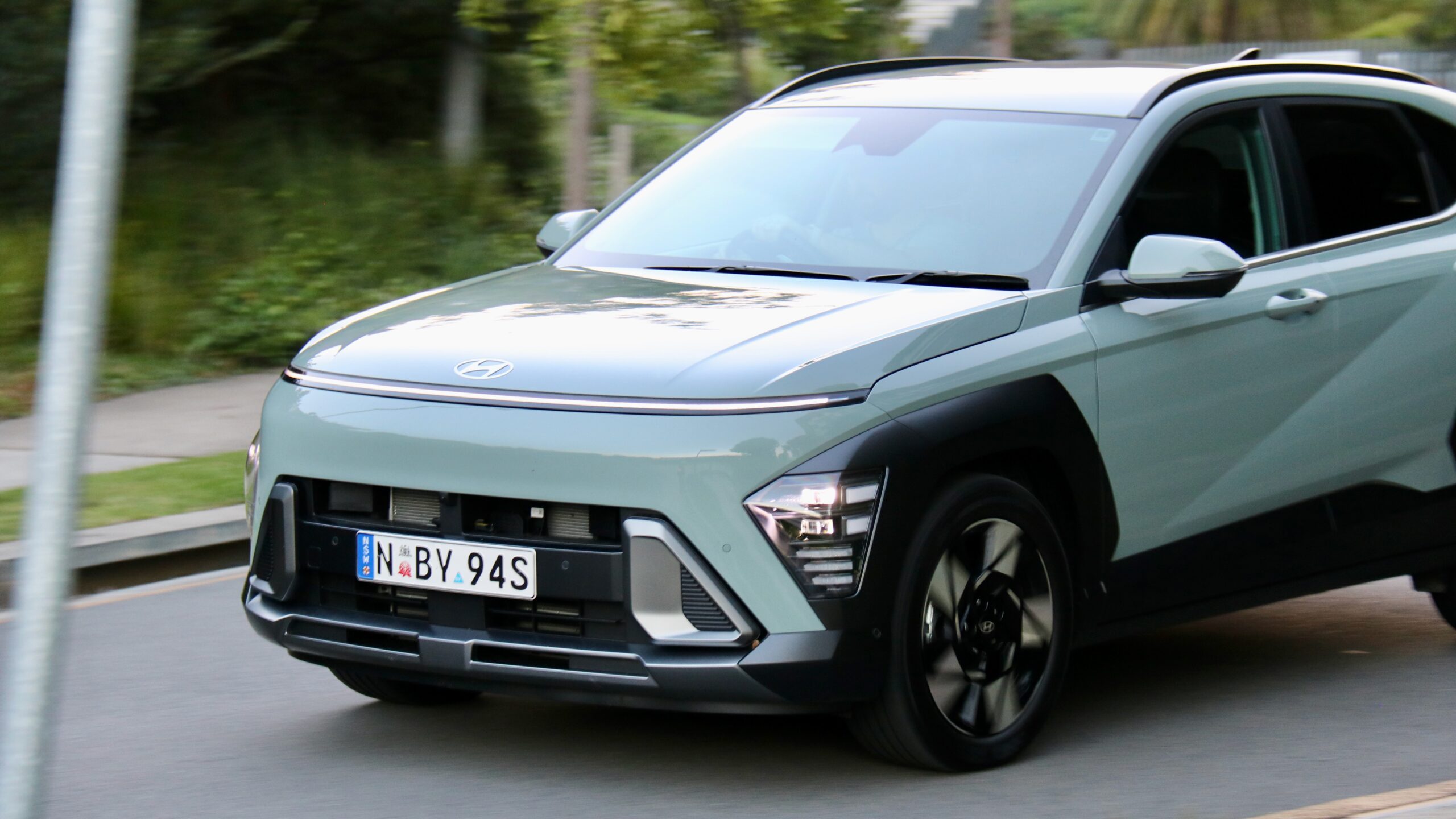
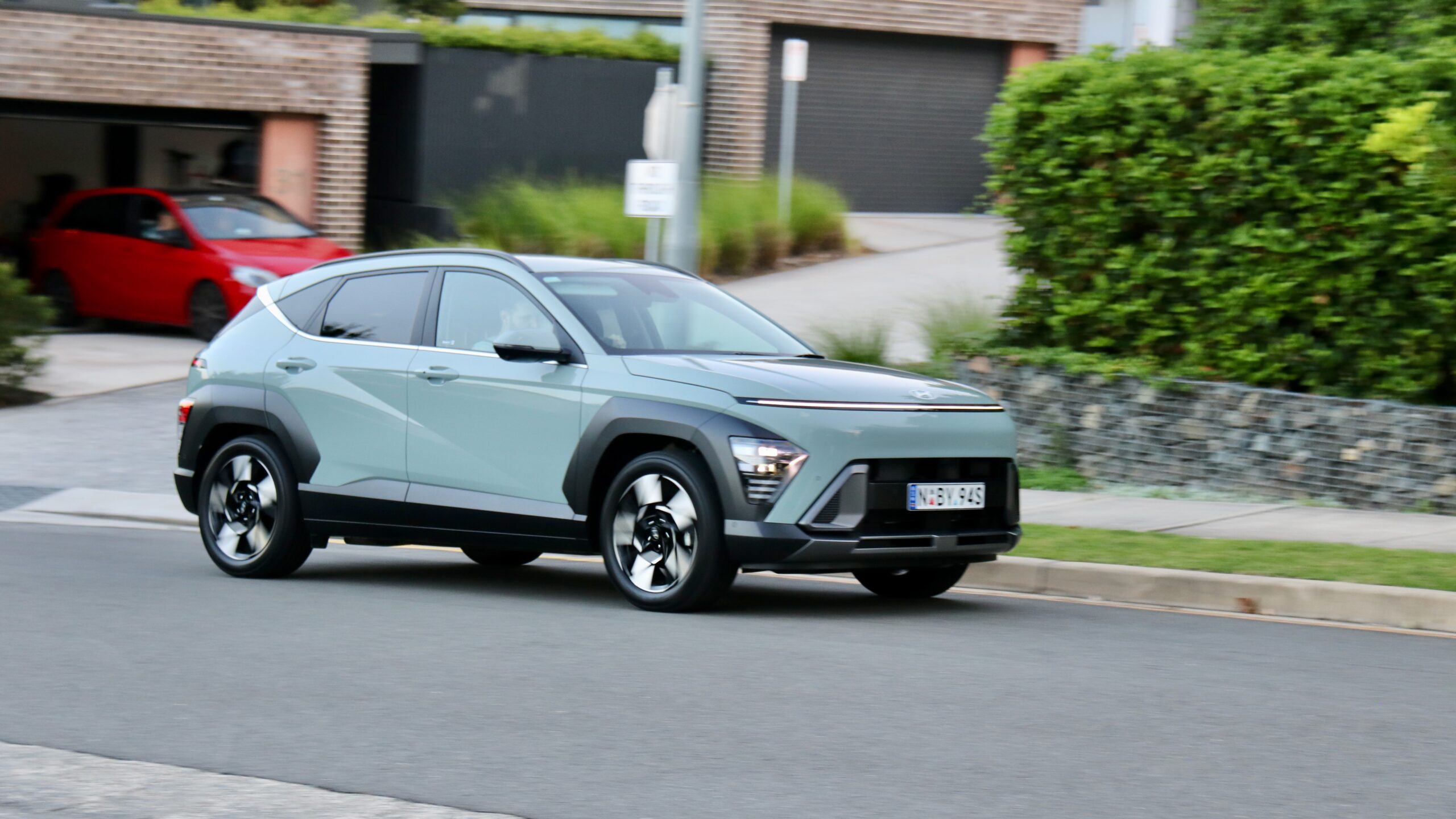
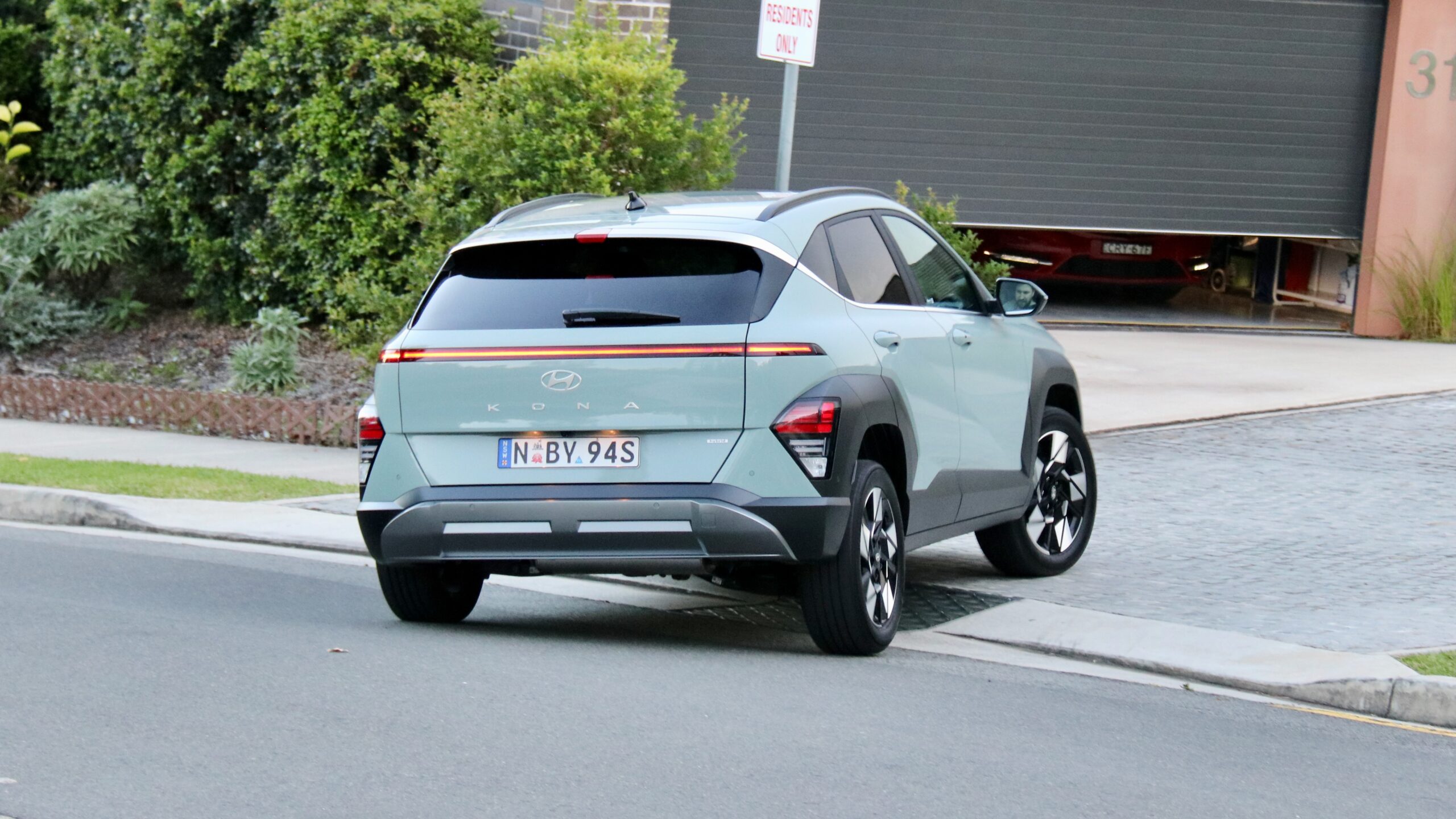
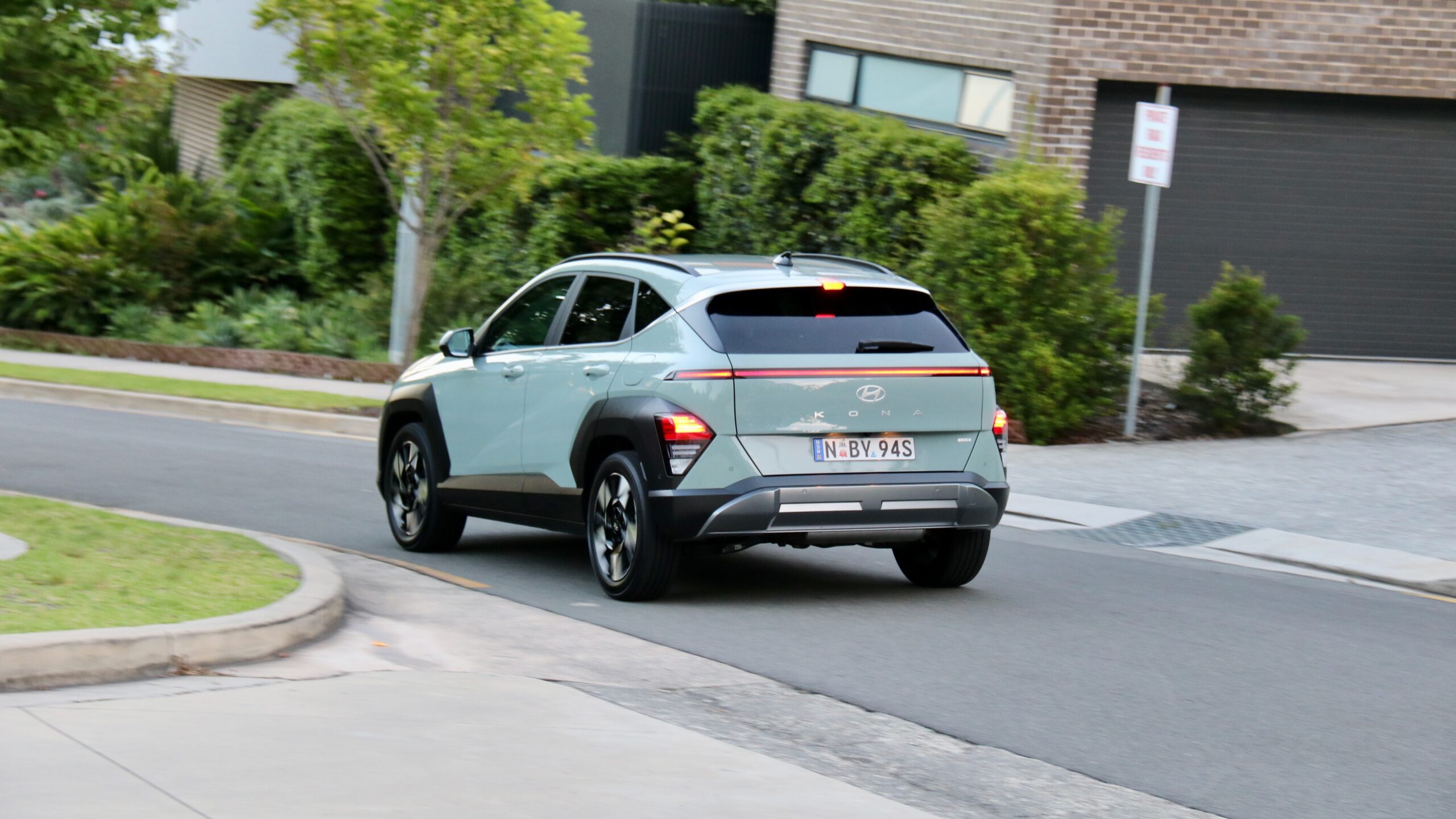
The claimed combined fuel consumption for the Kona Hybrid Premium is just 3.9L/100km with CO2 emissions of 89g/km – those numbers are healthy improvements of 2.7L/100km and 61g/km respectively over the 2.0-litre petrol Kona. The more powerful Corolla Cross is rated at 4.3L/100km and 96g/km respectively. In our combined testing, we achieved a somewhat disappointing 5.8L/100km, but that included a lot of highway driving, which isn’t where hybrids typically shine. The Kona can run on 91RON regular unleaded, while its 38-litre fuel tank is 9L less than the petrol Kona.
What is the 2024 Hyundai Kona Hybrid Premium like to drive?
Like the regular petrol Kona, the 2024 Hyundai Kona Hybrid Premium offers a pretty good driving experience in the small SUV class, though there are definite differences between it and the petrol model thanks to the hybrid’s 70kg extra weight (1,525kg versus 1,455kg tare and 45kg more than the Corolla Cross). Because of that, the Kona Hybrid’s ride quality isn’t as good as the petrol model and it can be a bit crashy over larger bumps, despite the hybrid’s independent rear suspension set up (versus the petrol model’s torsion beam). The extra weight affects the handling too, which isn’t quite as sweet as the regular model, but it feels more dynamic than the Corolla Cross.
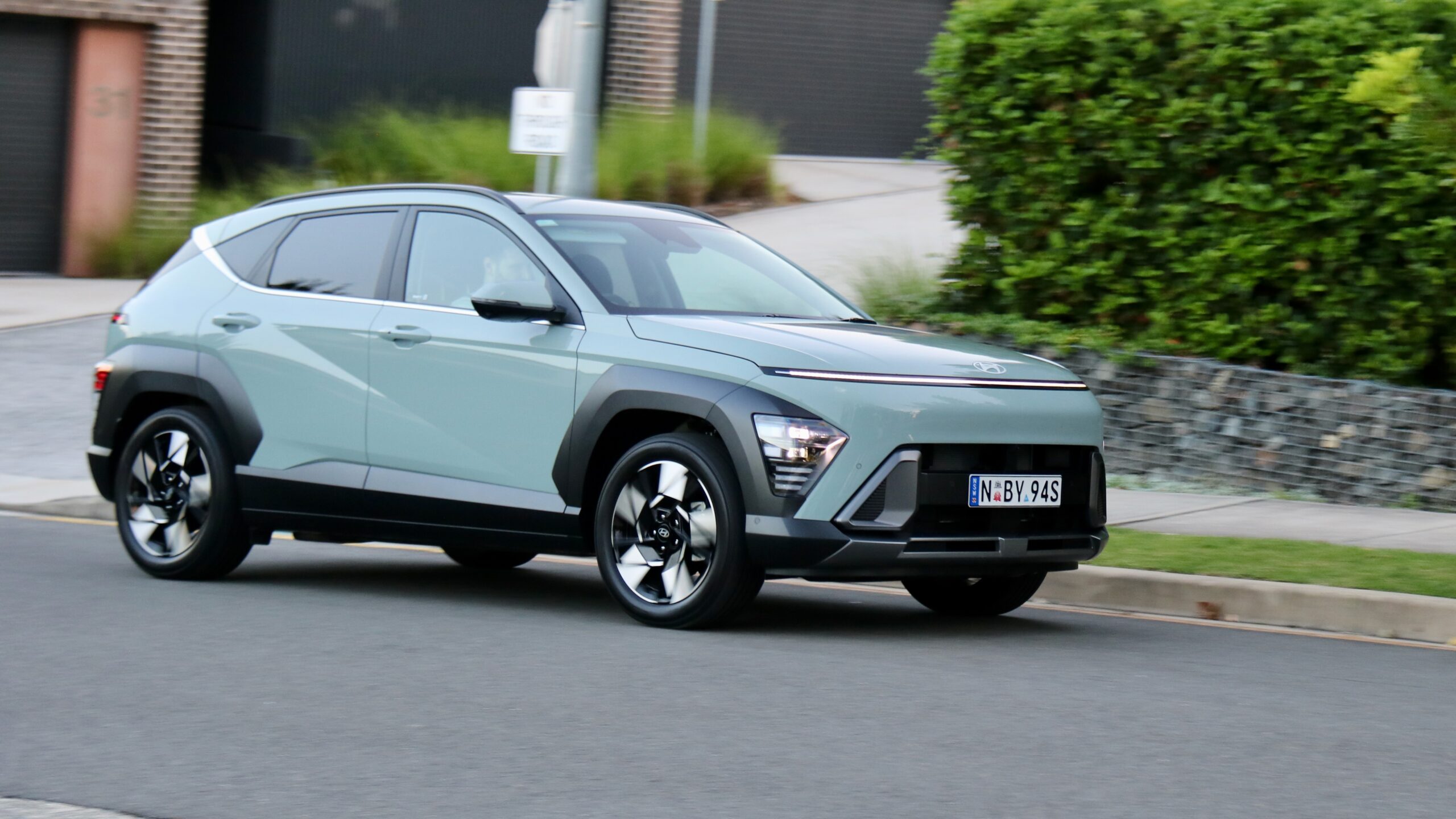
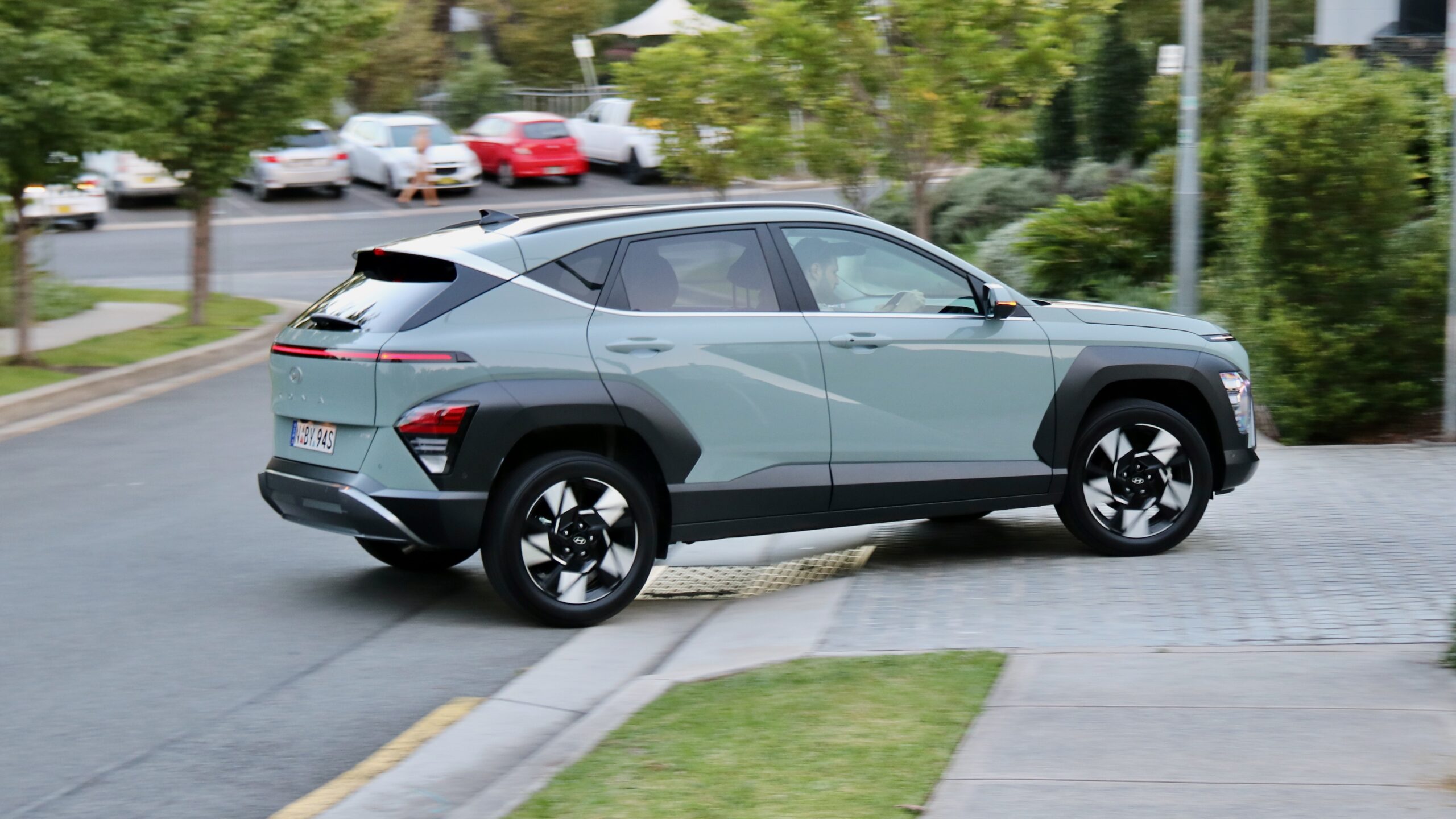
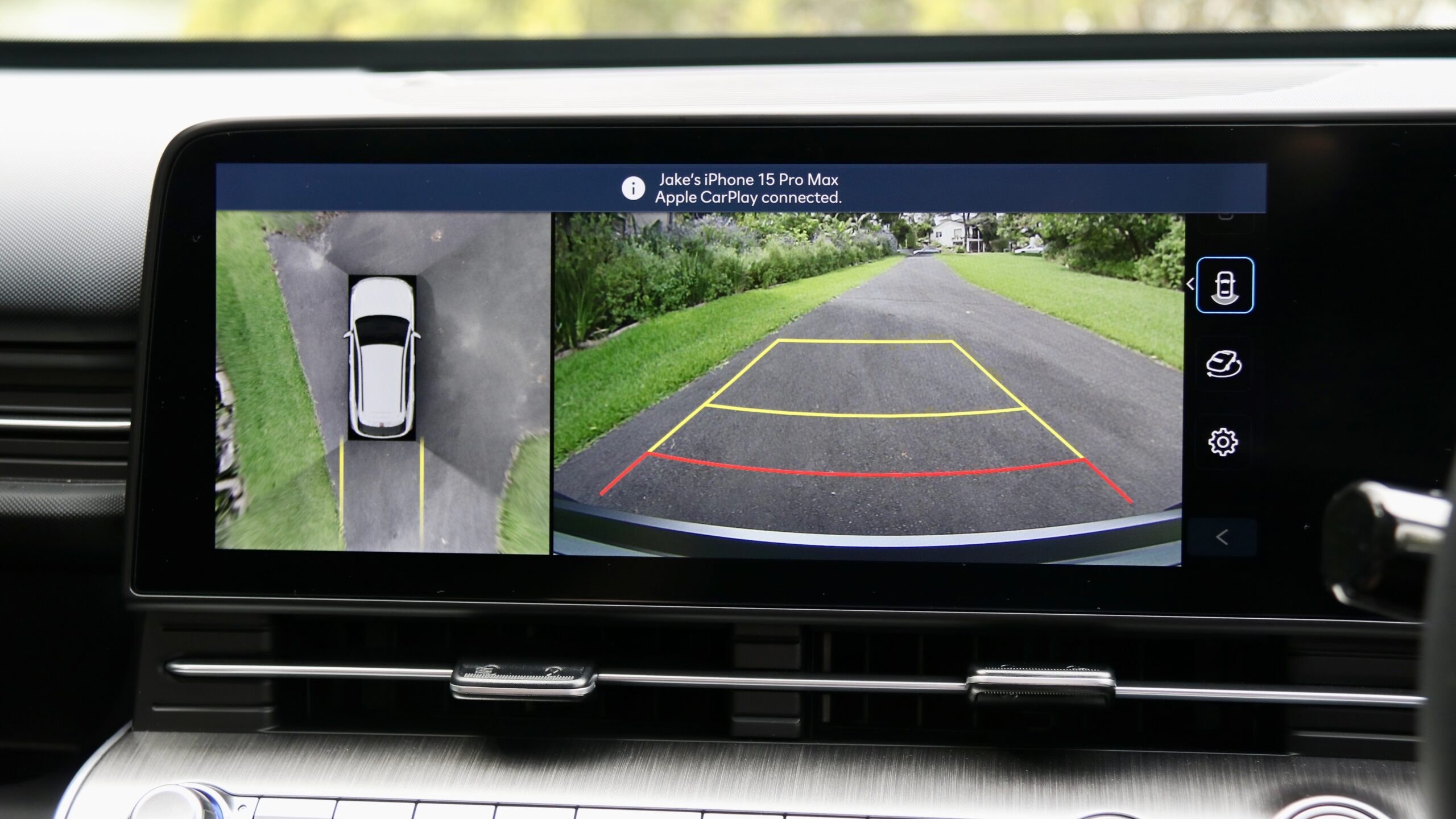
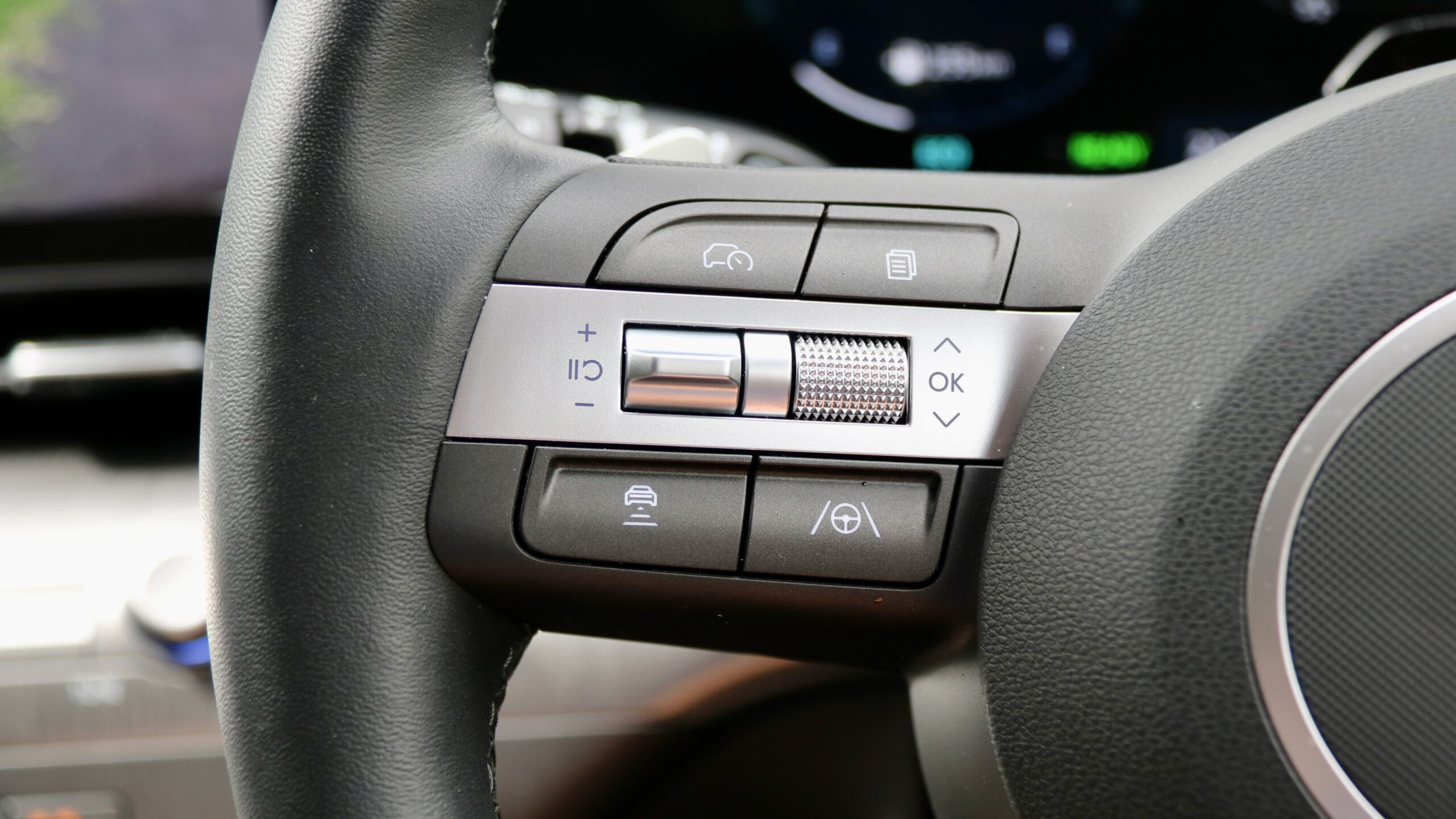
Like the petrol Kona, road noise levels in the hybrid aren’t amazing and are probably accentuated by the hybrid’s lack of engine noise at times. But its visibility is pretty good, and the safety systems are – mostly – well tuned. The much-publicised annoying active speed limit warnings are now quieter and less annoying than before, though it’s still annoying because it’s not accurate. The driver attention alert is also annoying, and dings at you when you even look at the central touchscreen.
How practical is the 2024 Hyundai Kona Hybrid Premium?
As with the regular Kona, the interior of the 2024 Hyundai Kona Hybrid Premium is quite practical thanks to its growth spurt versus the old model. It’s also more comfortable, features increased practicality and has better tech integration throughout the cabin. One area we still think needs improvement, however, is the quality of the materials used, which are still quite plasticky and the only bit of soft touch is on the door cards – a softer-touch dashboard would help a lot, especially in the Premium. For quality, the Corolla Cross’ cabin is better thanks to its soft touch materials, though the Kona’s looks a lot more cohesive.
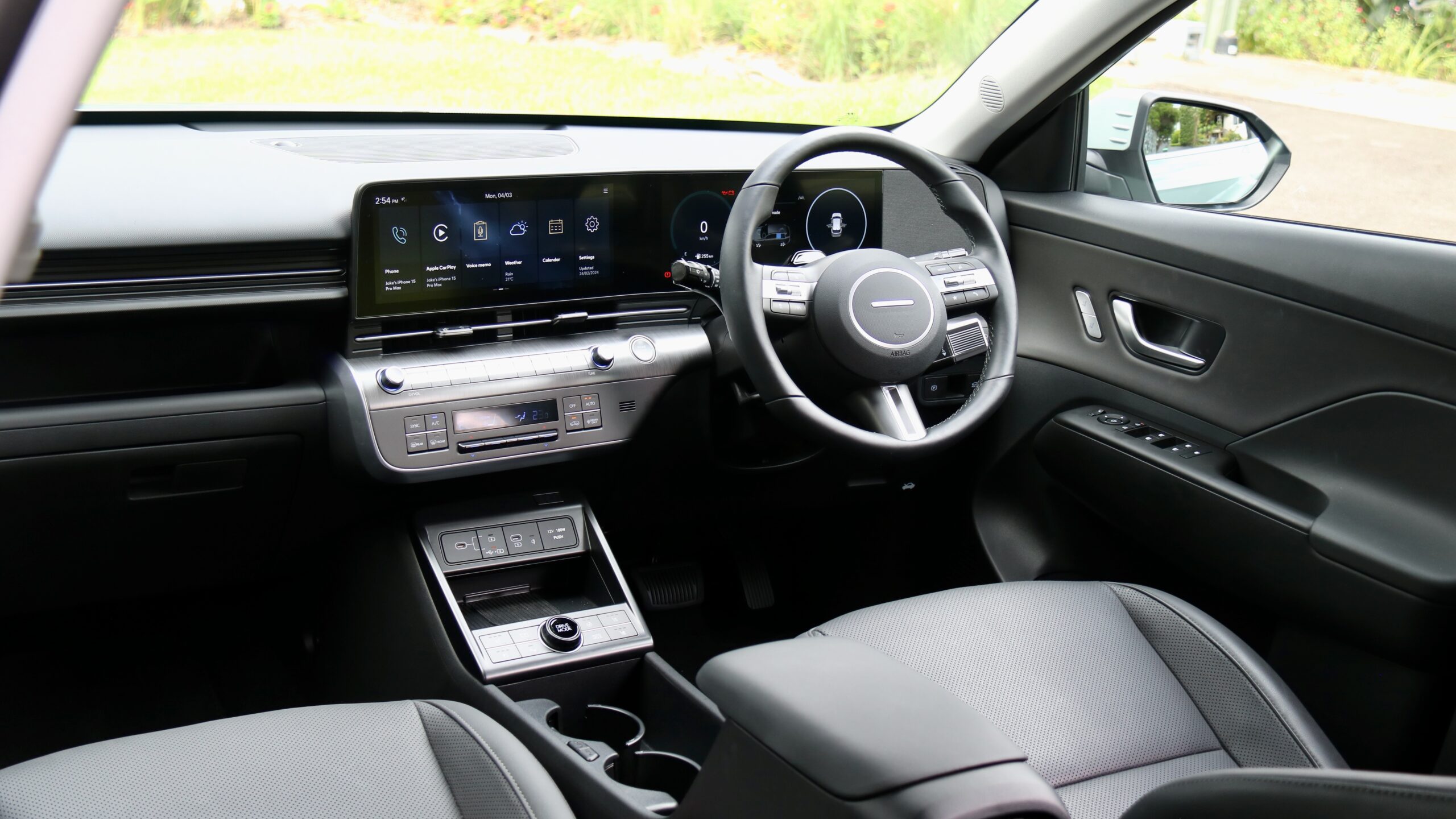
Centre of the Kona’s cabin is a 12.3-inch touchscreen with Hyundai’s new infotainment software. It’s a fairly impressive system that improves on the already-solid system that’s used in the previous Kona and a lot of other current Hyundai products. The Premium adds inbuilt satellite navigation to the base model and, thanks to a recent over-the-air software update, also now features wireless Apple CarPlay and Android Auto smartphone mirroring. The eight-speaker Bose sound system is also nicely punchy.
We wish the colours used in the screen were a bit brighter – especially in the daytime – but it’s otherwise nicely responsive and the multi-colour LED interior lighting adds some visual pizazz inside.
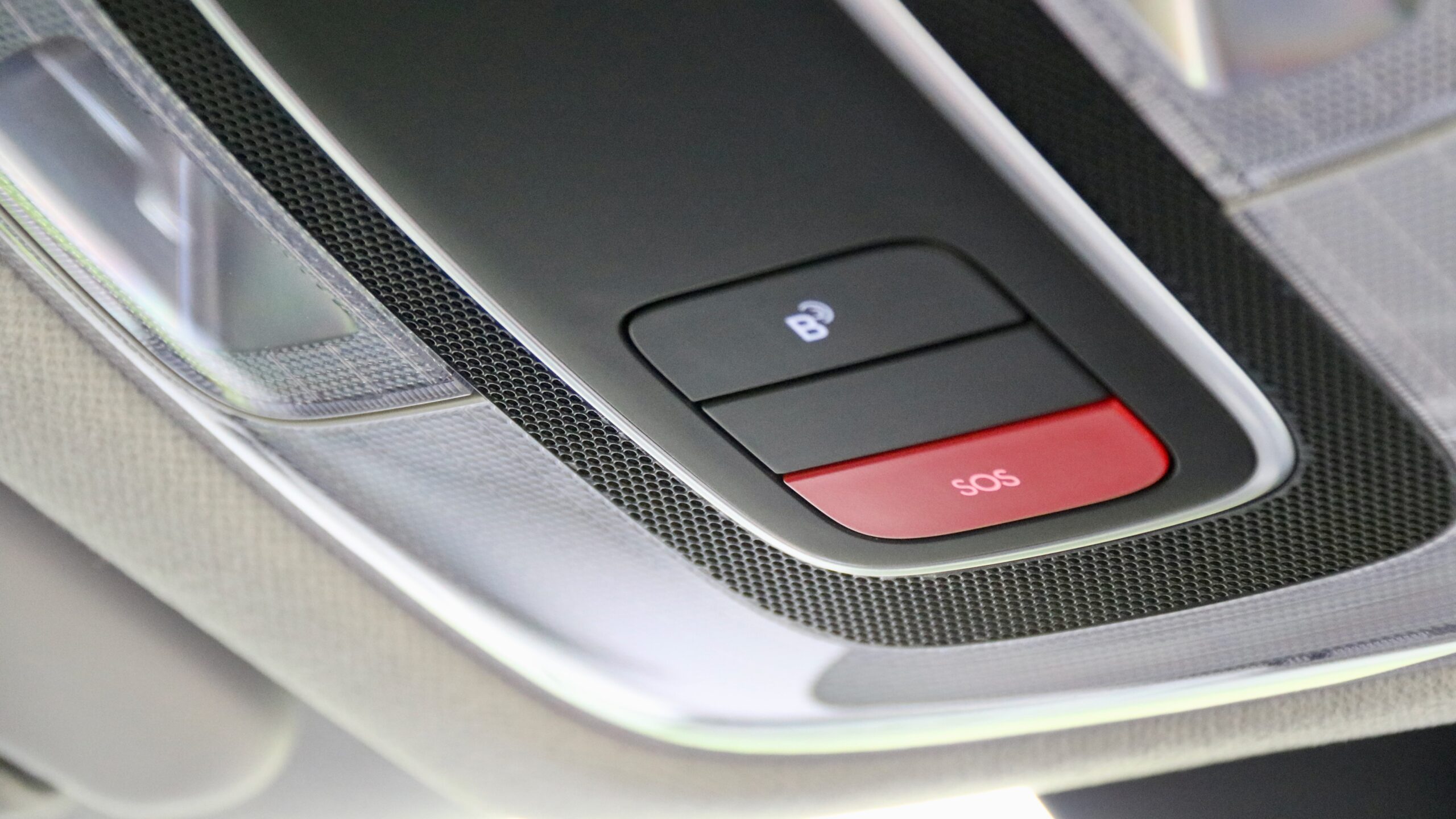
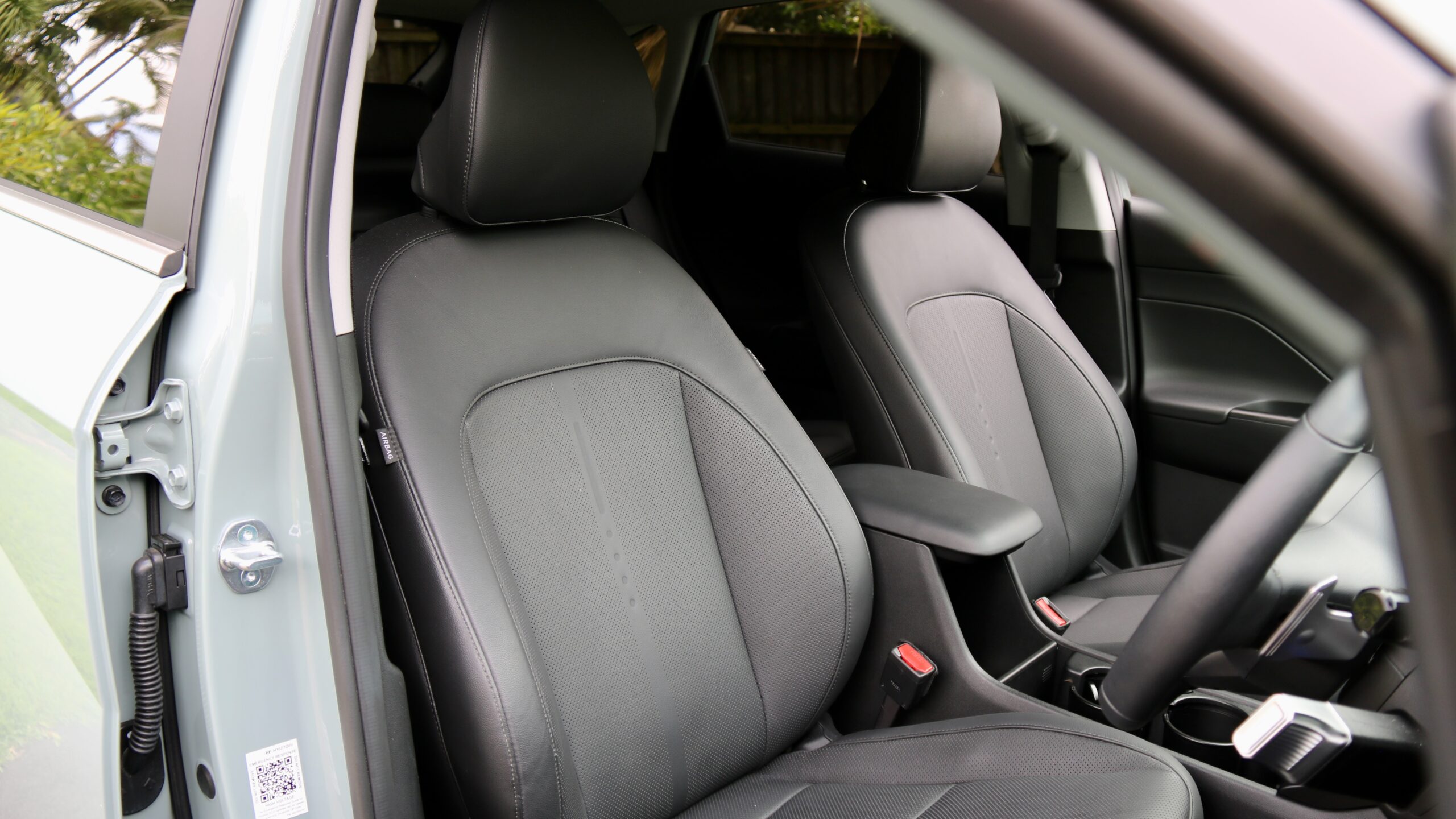
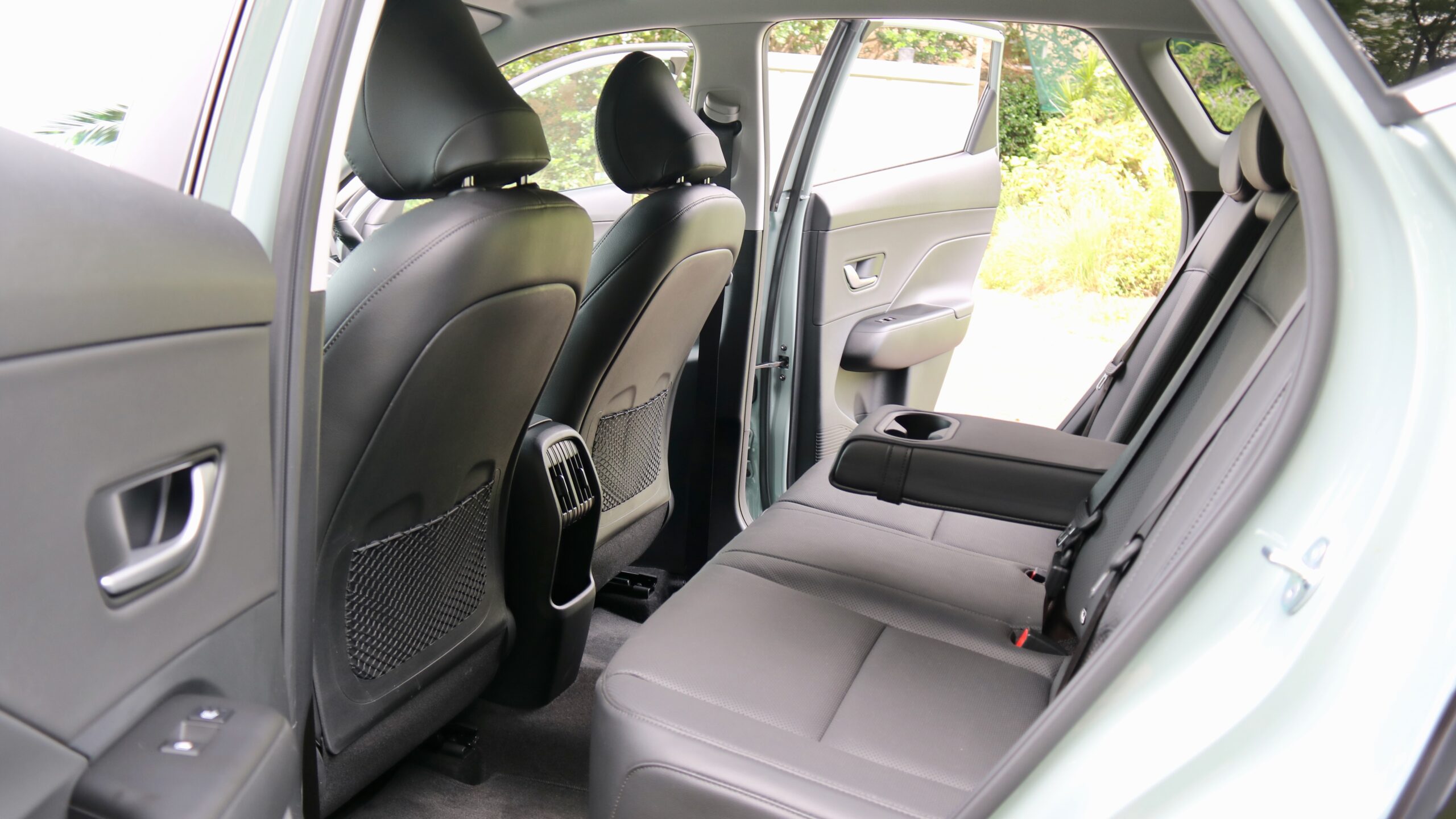
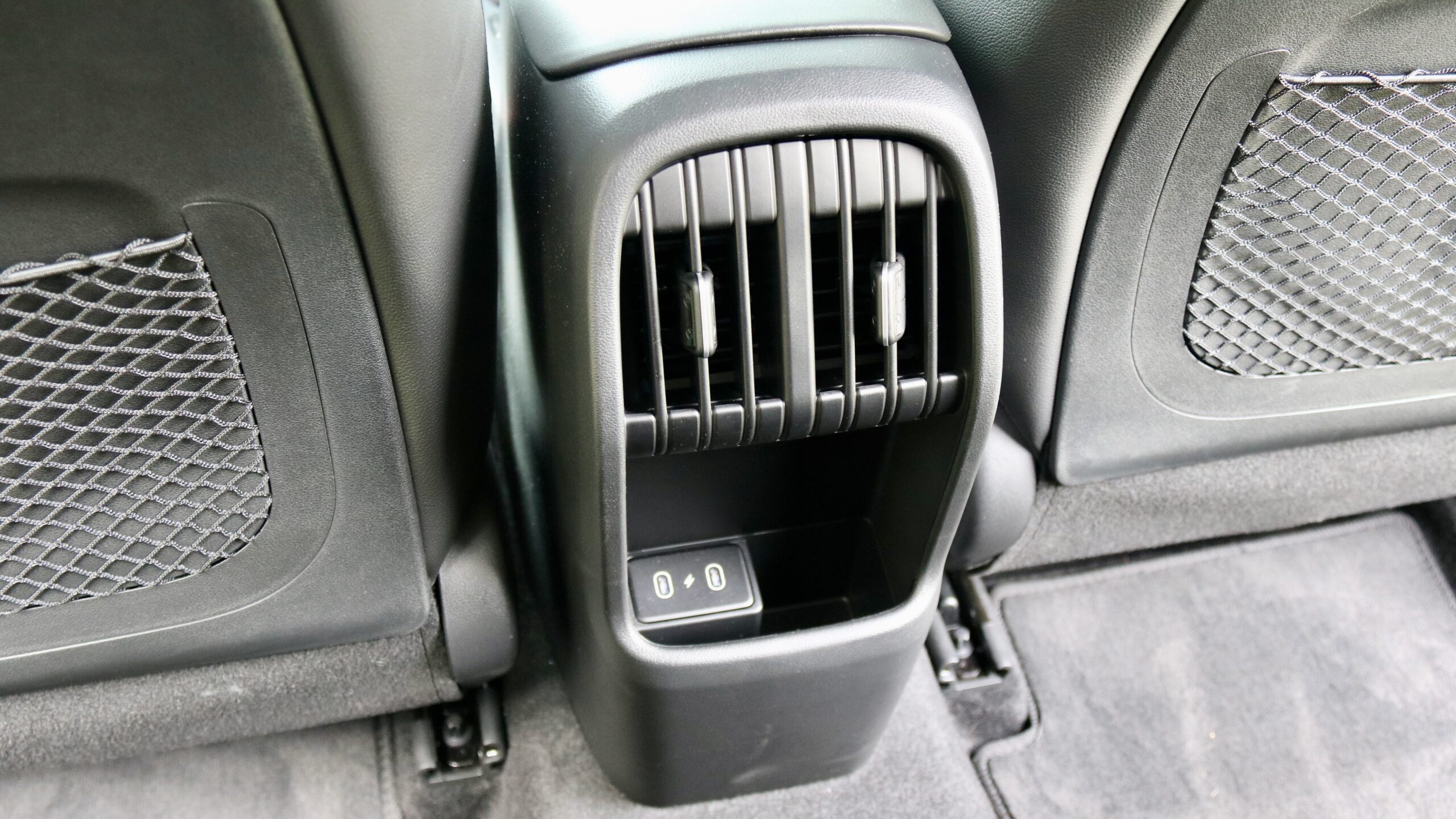
Storage inside the new Kona is also a big improvement on the last model. We love the open centre console storage, big cup holders and the very effective wireless phone charger. Further back is a centre armrest with storage underneath it, while there are also reasonable door bins, a nicely-sized glovebox, an open tray above the glovebox and an open area where the wireless charger is – itself is excellent thanks to the raised island that accounts for large smartphone cameras. Also pleasingly, in a win for ease of use, the AC controls are separate from the touchscreen and are very simple to use.
The back seat is also a good improvement over the previous Kona, and is now one of the roomiest in the segment. Two six-footers will be more than comfortable thanks to good knee -and headroom, while the seatbacks recline for greater comfort. In addition to that, two USB-C ports, as well as air vents, heated outboard seats, a centre armrest with cup holders, two map pockets and reasonable door storage also feature. There are two ISOFIX points and three top-tether points for child seats.
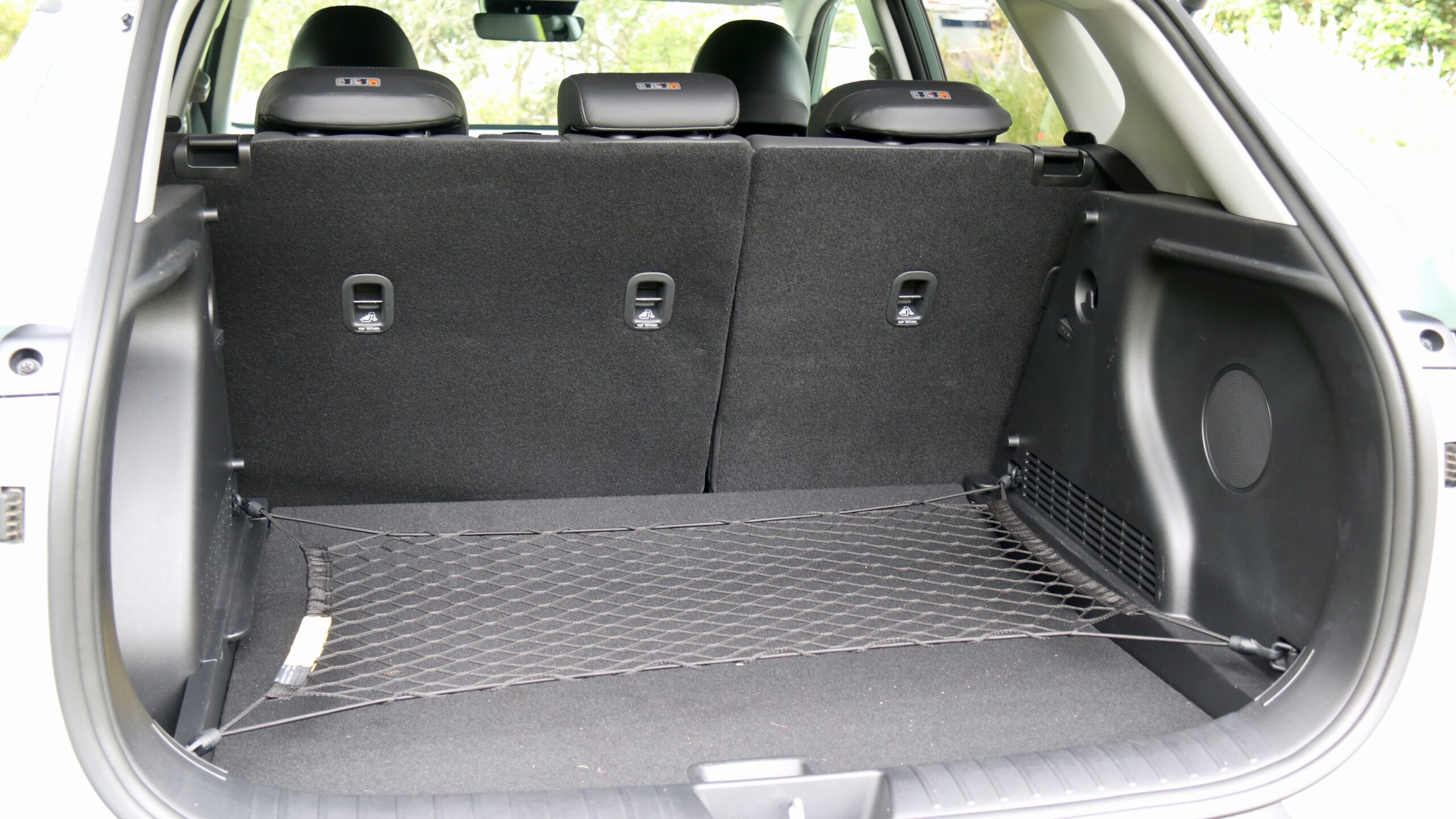
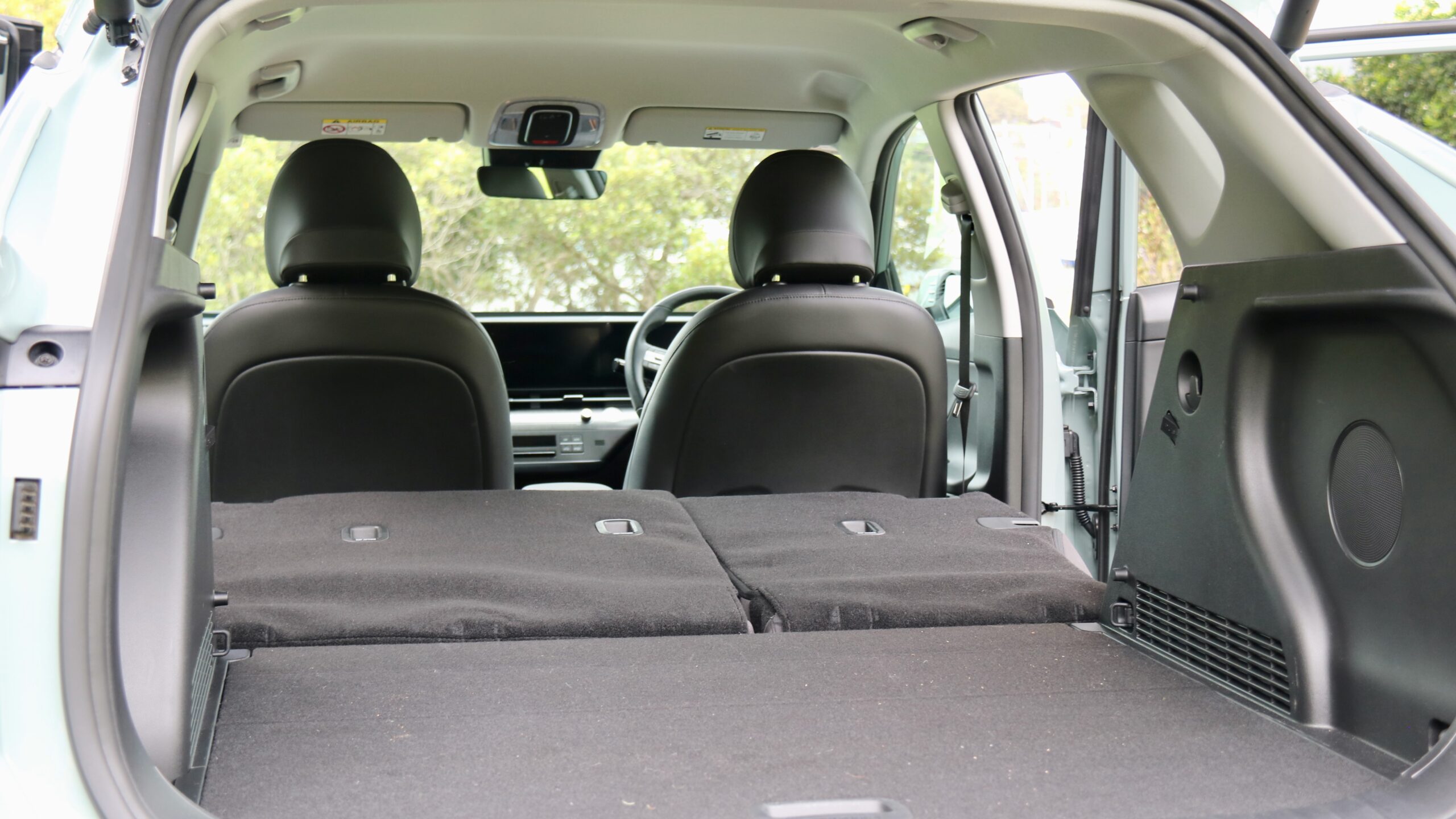

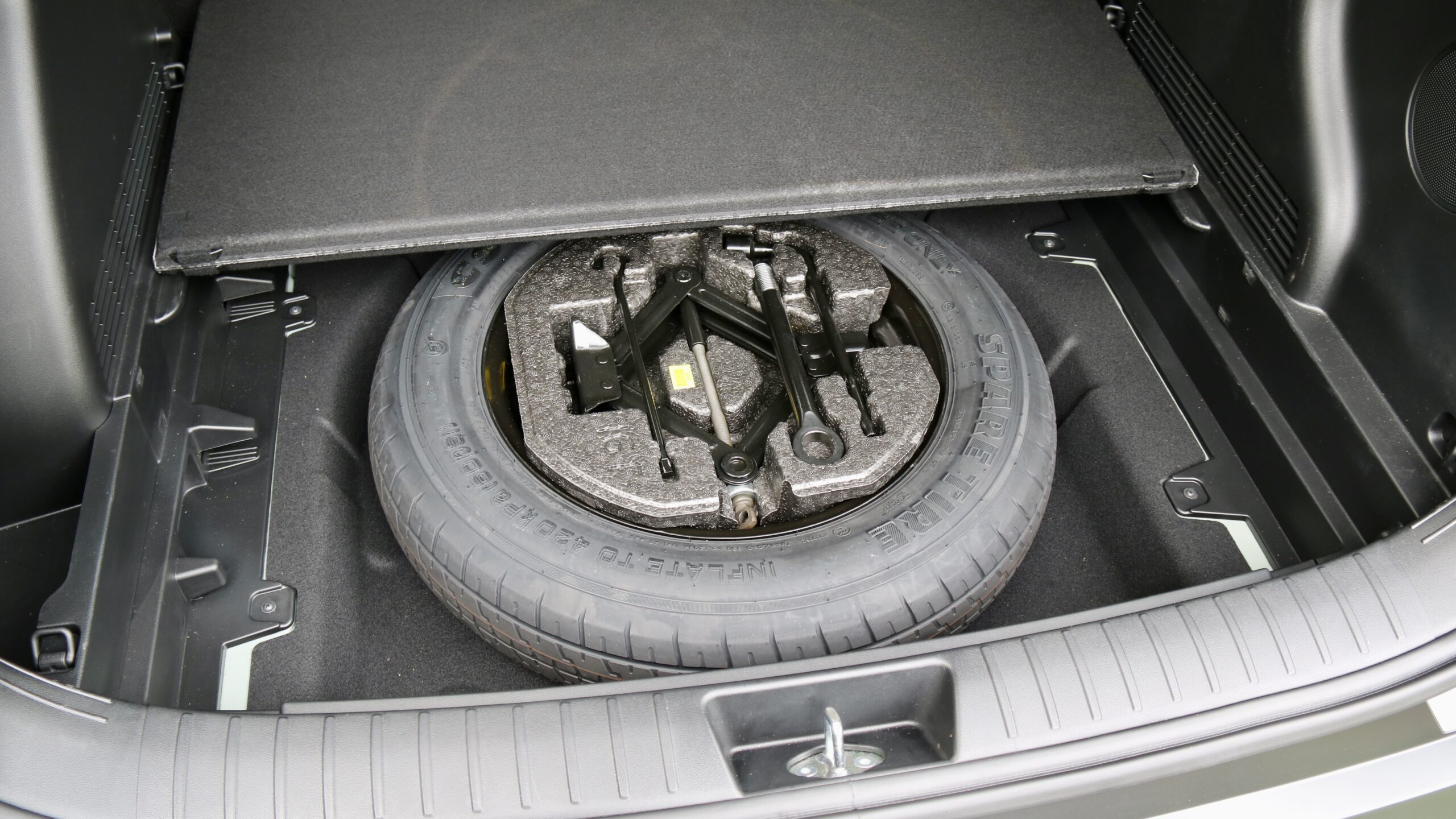
The boot of the Kona Hybrid Premium measures 407-litres with the seats up – just 7L less than the Corolla Cross Atmos Hybrid – and 1,241L with them folded – exactly the same numbers as the petrol Kona models, which are a healthy increase on the previous-generation model. There are also handy features like hooks, a boot net, an adjustable floor height and under floor storage. Plus, a space-saver spare wheel lies underneath the boot floor.
What warranty covers the 2024 Hyundai Kona Hybrid Premium?
As with other new Hyundai products, the 2024 Hyundai Kona Hybrid Premium is covered by a five-year/unlimited-kilometre warranty with an eight-year/160,000km warranty for the battery and lifetime roadside assistance if serviced through a Hyundai dealer. The first five services or up to 75,000km cost an expensive $2,535 ($507 per visit) and the Kona has 15,000km/annual service intervals.
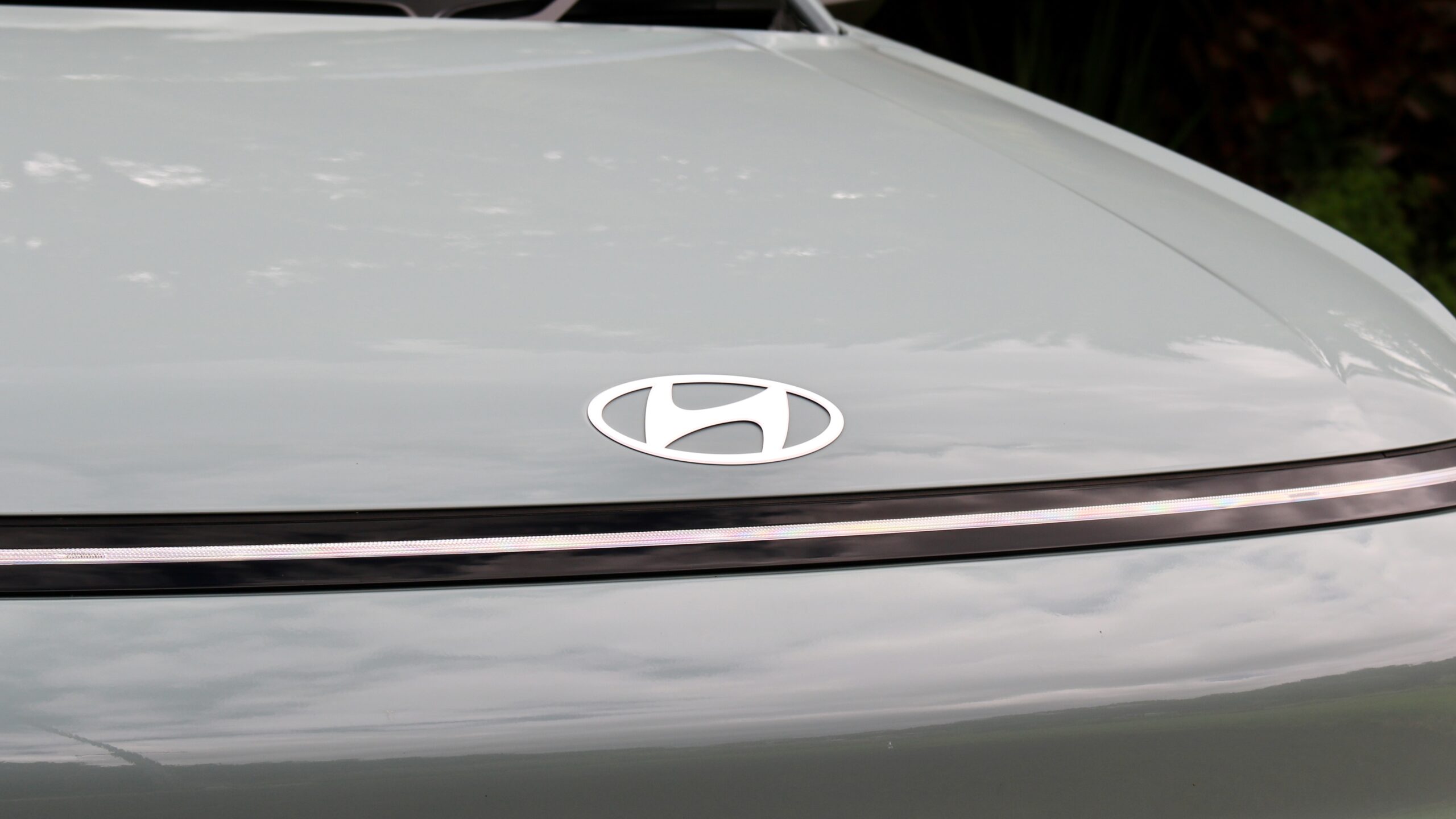
Toyota covers its new cars with a five-year/unlimited km warranty with no roadside assistance – though up to seven years of mechanical warranty and up to 10 years of battery warranty cover its hybrid models if serviced annually through a Toyota dealership. The Corolla Cross’ service intervals are identical to the Kona Hybrid and five years/75,000km of servicing costs $1,250 ($250 per service), which is less than half the cost of the Kona.
Should I buy a 2024 Hyundai Kona Hybrid Premium?
There’s no doubt that the 2024 Hyundai Kona Hybrid Premium is a welcome addition to the small SUV market. We greatly welcome new hybrid models, especially for the urban dwellers where most small SUVs seem to be sold, because their around town efficiency can be so much better than regular petrol models and the Kona is no different. In addition to that, the new Kona’s newfound practicality, long list of standard equipment and funky styling make it a worthy product of consideration.
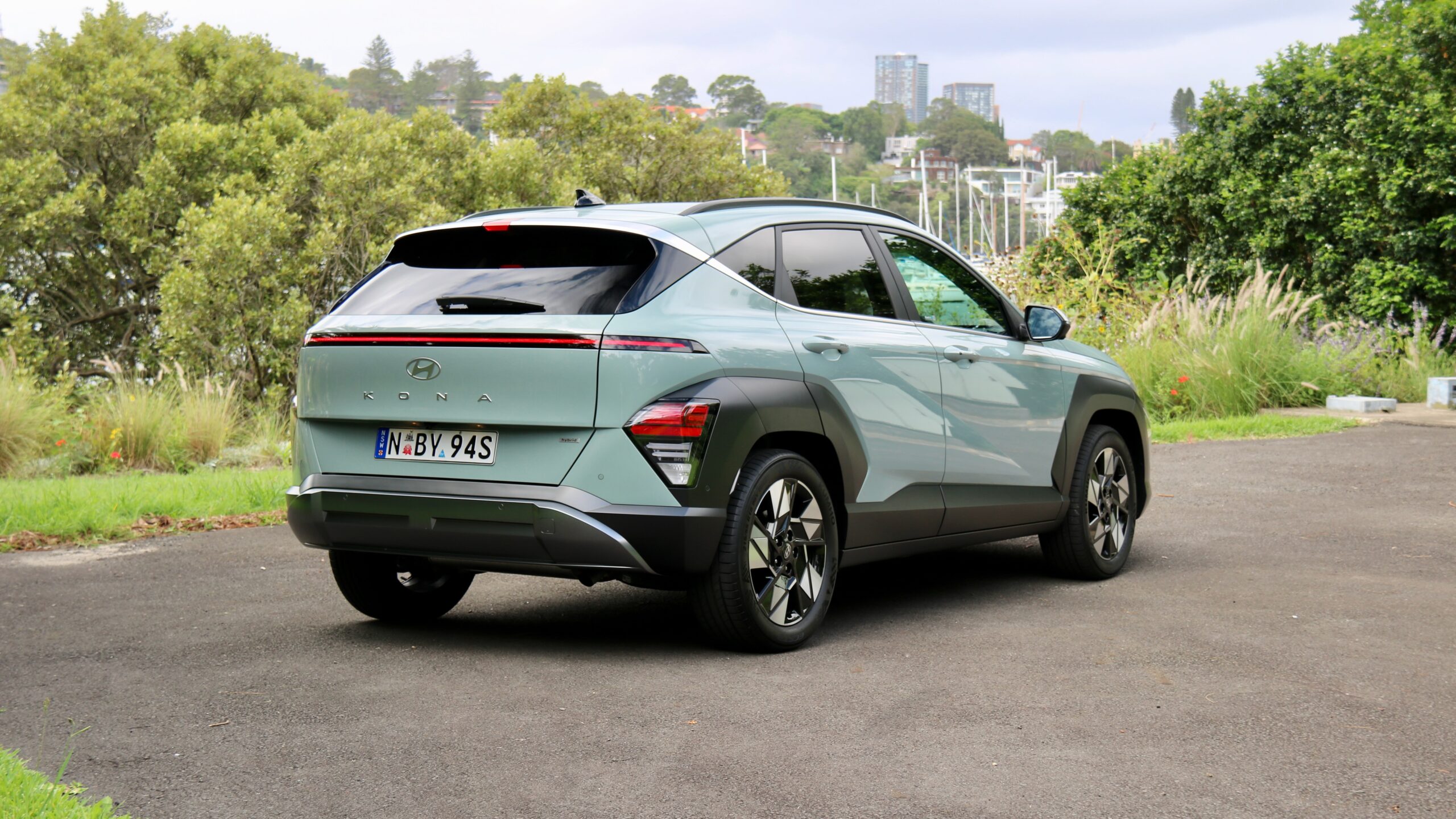
For negatives, it’s surprisingly expensive to service, it’s starting to get expensive to buy in top-spec Hybrid Premium, the extra weight of the hybrid is noticeable on the road thanks to the busier ride quality, our test consumption wasn’t great and the interior quality feels more $30,000 than almost-$50,000 drive away. Those issues aside, we still think the new Kona is a pretty good offering and the hybrid drivetrain only widens its already wide appeal further. We think that Hyundai is onto a winner with the Kona Hybrid and that can only be a good thing for consumers.
Read more: the DiscoverAuto 2024 Hyundai Kona Premium review.
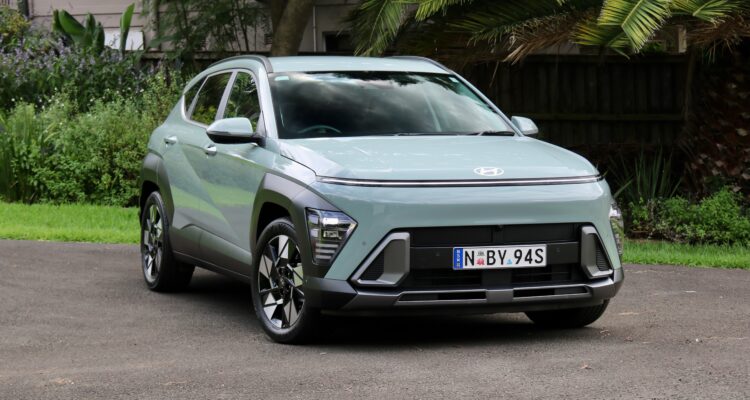


Leave a Reply